The History Book Club discussion

This topic is about
Unreasonable Men
PRESIDENTIAL SERIES
>
OPEN - SPOTLIGHT - PRESIDENTIAL SERIES - GLOSSARY - UNREASONABLE MEN ~ (Spoiler Thread)
 Joseph Little Bristow
Joseph Little Bristow
BRISTOW, Joseph Little, a Senator from Kansas; born near Hazel Green, Wolf County, Ky., July 22, 1861; moved with his father to Fredonia, Kans., in 1873; attended the country schools, and graduated from Baker University, Baldwin, Kans., in 1886; clerk of the district court of Douglas County 1886-1890; in 1890 bought the Salina (Kans.) Daily Republican, which he edited for five years; elected secretary of the Republican State committee in 1894; private secretary to the Governor 1895-1897; purchased the Ottawa (Kans.) Herald, which he owned for more than ten years; again elected secretary of the Republican State committee in 1898; Fourth Assistant Postmaster General 1897-1905; purchased the Salina Daily Republican-Journal in 1903; appointed a special commissioner of the Panama Railroad in 1905; elected as a Republican to the United States Senate and served from March 4, 1909, to March 3, 1915; was an unsuccessful candidate for renomination in 1914; chairman, Committee on Expenditures in the Post Office Department (Sixty-first and Sixty-second Congresses), Committee on Cuban Relations (Sixty-third Congress); temporarily engaged in agricultural pursuits with his son near Fairfax, Va.; chairman of the Kansas Utilities Commission 1915-1918; engaged in agricultural pursuits on his estate, “Ossian Hall,” near Fairfax, Va., from 1918 until his death there July 14, 1944; interment in Gypsum Hill Cemetery, Salina, Kans. (Source: Biographical Directory of the United States Congress)
More:
https://en.wikipedia.org/wiki/Joseph_...
https://www.kshs.org/kansapedia/josep...
https://www.kshs.org/p/joseph-bristow...
https://www.geni.com/people/Joseph-L-...
https://www.accessgenealogy.com/kansa...
http://www.findagrave.com/cgi-bin/fg....
http://www.robinsonlibrary.com/americ...
http://www.kansasmemory.org/item/200085
http://www.kansasmemory.org/item/208267
http://www.ancestry.com/genealogy/rec...
(no image)Report of Joseph L. Bristow: Special Panama Railroad Commissioner to the Secretary of War June 24, 1905 by Joseph Little Bristow (no photo)
 by Joseph Little Bristow (no photo)
by Joseph Little Bristow (no photo) by William Elsey Connelley (no photo)
by William Elsey Connelley (no photo) by Joseph Little Bristow (no photo)
by Joseph Little Bristow (no photo) by Frank W. Blackmar (no photo)
by Frank W. Blackmar (no photo) by Jo Anne McCormick Quatannens (no photo)
by Jo Anne McCormick Quatannens (no photo)
 Henry Osborne Havemeyer
Henry Osborne Havemeyer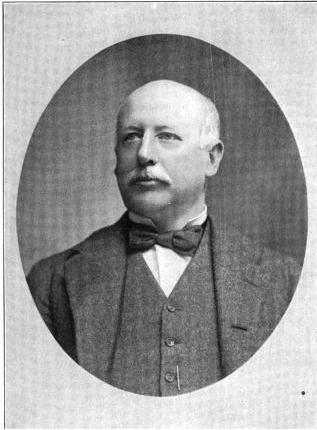
Henry Osborne Havemeyer (October 18, 1847 – December 4, 1907) was an American industrialist, entrepreneur and sugar refiner who founded and became president of the American Sugar Refining Company in 1891.
Havemeyer was the third generation of his family in the sugar business and oversaw the expansion of the family firm into the American Sugar Refining Company which dominated the sugar industry in the late 19th century. Together with his wife, Louisine Havemeyer, he was an avid and prolific collector of art, one of the earliest collectors to bring Impressionist Art to America, guided by artist Mary Cassatt. After Louisine Havemeyer's death in 1929, a large part of their collection was bequeathed to the Metropolitan Museum of Art. (Source: Wikipedia)
More:
http://www.musee-orsay.fr/en/events/e...
http://www.brooklyneagle.com/articles...
http://www.infoplease.com/encyclopedi...
http://academics.smcvt.edu/shelburnem...
http://www.firstsuperspeedway.com/art...
http://libmma.org/digital_files/archi...
http://search.ancestry.com/cgi-bin/ss...
http://www.greenwichtime.com/news/art...
http://www.nytimes.com/1993/03/26/art...
http://www.encyclopedia.com/topic/Hen...
http://thegildedageera.blogspot.hr/20...
http://www.metmuseum.org/art/metpubli...
http://daytoninmanhattan.blogspot.hr/...
(no image)The Emergence of Oligopoly: Sugar Refining as a Case Study by Alfred S. Eichner (no photo)
 by Harry W. Havemeyer (no photo)
by Harry W. Havemeyer (no photo) by Frances Weitzenhoffer (no photo)
by Frances Weitzenhoffer (no photo) by Paul Leroy Vogt (no photo)
by Paul Leroy Vogt (no photo) by Louisine W. Havemeyer (no photo)
by Louisine W. Havemeyer (no photo) by Alice Cooney Frelinghuysen (no photo)
by Alice Cooney Frelinghuysen (no photo) by John N. Ingham (no photo)
by John N. Ingham (no photo) by
by
 Alfred D. Chandler Jr.
Alfred D. Chandler Jr.
 Tariff History of the United States
Tariff History of the United States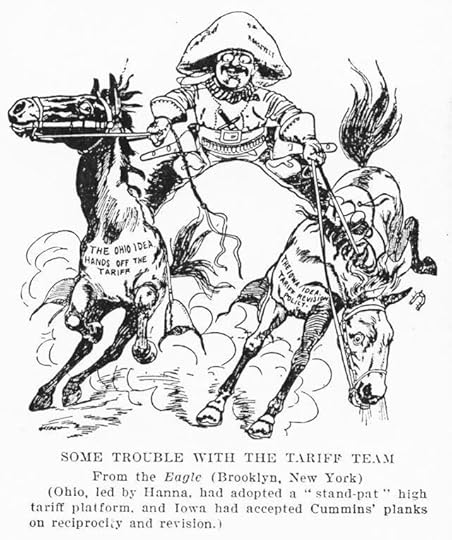
Tariffs in United States history have played important roles in trade policy, political debates and the nation's economic history.
The main goal of the tariff was money to pay the federal budget. Controversy arose over whether manufacturing interests were favored and consumer interests hurt by high tariffs.
The 1st United States Congress, wanting a straightforward tax that was not too onerous and easy to collect, passed the Tariff Act of 1789. Treasury agents collected the tariff before goods could be landed, and what became the Coast Guard prevented smuggling. Tariffs were the largest (approaching 95% at times) source of federal revenue until the Federal income tax began after 1913. For well over a century the federal government was largely financed by tariffs averaging about 20% on foreign imports. There are no tariffs for imports or shipments from other states. Since the 1940s, foreign trade policies have focused more on reciprocal tariffs and low tariff rates rather than using tariffs as a significant source of Federal tax revenue. The goal of using higher tariffs to promote industrialization was urged by the first Secretary of the Treasury, Alexander Hamilton, and after him the Whig Party. They generally failed because Jeffersonian and Jacksonian Democrats said the tariff should be only high enough to pay the government's bills; otherwise, it would hurt the consumers. The Republicans, however, made high tariffs the centerpiece of their economic policy beginning in 1861, and as late as 1930. Since 1930, tariffs have not been a major political issue. (Source: Wikipedia)
More:
https://www.boundless.com/u-s-history...
http://www.encyclopedia.com/topic/tar...
http://www.nber.org/reporter/summer06...
http://www.u-s-history.com/pages/h394...
http://www.u-s-history.com/pages/h963...
http://www.cato.org/publications/comm...
https://www.questia.com/library/econo...
http://www.jstor.org/stable/2122117?s...
(no image)The Nafta Puzzle: Political Parties And Trade In North America by Charles F. Doran (no photo)
(no image)The Tariff Controversy in the United States, 1789-1833 by Orrin Leslie Elliott (no photo)
(no image)Politics, Pressures, And The Tariff by E.E. Schattschneider (no photo)
 by F.W. Taussig (no photo)
by F.W. Taussig (no photo) by Davis Rich Dewey (no photo)
by Davis Rich Dewey (no photo) by Alfred E. Eckes Jr. (no photo)
by Alfred E. Eckes Jr. (no photo) by Edward S. Kaplan (no photo)
by Edward S. Kaplan (no photo) by Edward S. Kaplan (no photo)
by Edward S. Kaplan (no photo) by John H. Barton (no photo)
by John H. Barton (no photo)
 Elihu Root
Elihu Root
Elihu Root, (born Feb. 15, 1845, Clinton, N.Y., U.S.—died Feb. 7, 1937, New York, N.Y.)
American lawyer and statesman, winner of the Nobel Prize for Peace in 1912.
Root received his law degree from New York University in 1867 and became a leading corporation lawyer. As U.S. attorney for the southern district of New York (1883–85) he came into close contact with Theodore Roosevelt, then a leader in New York Republican politics, and became Roosevelt’s friend and legal adviser.
As secretary of war in President William McKinley’s (and, after McKinley’s assassination, Roosevelt’s) cabinet (1899–1903), Root worked out governmental arrangements for the former Spanish areas then under U.S. control as a result of the Spanish-American War. He was the primary author of the Foraker Act (1900), which provided for civil government in Puerto Rico. He established U.S. authority in the Philippines and wrote the instructions for an American governing commission sent there in 1900. He also effected a reorganization of the U.S. Army, established the principle of rotation of officers from staff to line, and created the Army War College in 1901.
Root left the cabinet in 1904 but returned as secretary of state the following year during Roosevelt’s second term and remained until 1909. On a tour of South America (1906) he persuaded Latin-American states to participate in the Second Hague Peace Conference, and he negotiated agreements by which Japan undertook to control its immigration to the United States and to arbitrate certain kinds of disputes. With the Japanese ambassador to the United States, Takahira Kogoro, Root negotiated the Root-Takahira Agreement (1908), under whose terms Japan promised to respect the Open Door Policy in China. Root also concluded treaties of arbitration with more than 20 nations. Later, as chief counsel for the United States before the Hague Tribunal, he settled the controversy between the United States and Great Britain over the North Atlantic coast fisheries. For these and other contributions to peace and general world harmony he was awarded the Nobel Prize for Peace.
From 1909 to 1915, as a Republican senator from New York, Root sided with the William Howard Taft wing of the party. After the outbreak of World War I in Europe, he openly supported the Allies and was critical of President Woodrow Wilson’s policy of neutrality. He was a leading Republican supporter of international law and served on the commission of jurists that established the Permanent Court of International Justice (1920–21). President Warren Harding appointed him one of four U.S. delegates to the International Conference on the Limitation of Armaments (1921–22). In his later years Root worked closely with Andrew Carnegie on programs for international peace and for the advancement of science. (Source: Encyclopedia Britannica)
More:
https://en.wikipedia.org/wiki/Elihu_Root
http://www.nobelprize.org/nobel_prize...
https://www.nobelprize.org/nobel_priz...
https://history.state.gov/departmenth...
http://www.encyclopedia.com/topic/Eli...
http://oxfordindex.oup.com/view/10.10...
https://www.hamilton.edu/history/elih...
(no image)Elihu Root (2 Volumes) by Philip C. Jessup (no photo)
 by Elihu Root (no photo)
by Elihu Root (no photo) by Elihu Root (no photo)
by Elihu Root (no photo) by Elihu Root (no photo)
by Elihu Root (no photo) by Elihu Root (no photo)
by Elihu Root (no photo) by Richard William Leopold (no photo)
by Richard William Leopold (no photo) by L. A. Coolidge (no photo)
by L. A. Coolidge (no photo) by Warren Zimmermann (no photo)
by Warren Zimmermann (no photo)
 Chautauqua
Chautauqua
Cover of a 1917 promotional brochure
Chautauqua was an adult education movement in the United States, highly popular in the late 19th and early 20th centuries. Chautauqua assemblies expanded and spread throughout rural America until the mid-1920s. The Chautauqua brought entertainment and culture for the whole community, with speakers, teachers, musicians, entertainers, preachers and specialists of the day. Former U.S. President Theodore Roosevelt was quoted as saying that Chautauqua is "the most American thing in America." H.L. Mencken used the word "chautauqua" (lower case) to refer more generally to a herd of clumsy writers: "When they essay to be jocose, the result is usually an elephantine whimsicality, by the chautauqua out of the Atlantic Monthly." [Vintage Mencken, p. 96, ed. Alistair Cooke, 1955].
Lectures were the mainstay of the chautauqua. Prior to 1917, lectures dominated the circuit chautauqua programs. The reform speech and the inspirational talk were the two main types of lecture until 1913. Later topics included current events, travel and stories, often with a comedic twist.
Chautauquas can be viewed in the context of the populist ferment of the late 19th century. Manifestos such as the "Populist Party Platform" voiced a disdain for political corruption and championed the plight of the common people in the face of the rich and powerful. Other favorite political reform topics in Chautauqua lectures included temperance (even prohibition), women's suffrage, and child labor laws.
However, the Chautauqua movement usually avoided taking political stands as such, instead inviting public officials of all the major political parties to lecture, assuring a balanced program for the members of the assembly. For example, during the 1936 season at the Chautauqua Institution, in anticipation of the national election held that year for president, visitors heard not only addresses by Franklin Roosevelt and his Republican challenger Alf Landon, but from two third-party candidates.
(Source: Wikipedia)
More:
http://www.merriam-webster.com/dictio...
http://ciweb.org/
https://www.chautauqua.com/
http://www.lib.uiowa.edu/sc/tc/
http://www.chautauquatrail.com/
http://www.greenvillechautauqua.org/
http://www.florida-chautauqua-center....
http://www.waxahachiechautauqua.org/
(no image)Cast of One: One-0 Shows from the Chautauqua Platform to the Broadway Stage by John S. Gentile (no photo)
(no image)The Grand Assembly: The Story Of Life At The Colorado Chautauqua by Mary Galey (no photo)
 by Victoria Case (no photo)
by Victoria Case (no photo) by Charlotte M. Canning (no photo)
by Charlotte M. Canning (no photo) by John E. Tapia (no photo)
by John E. Tapia (no photo) by Jesse Lyman Hurlbut (no photo)
by Jesse Lyman Hurlbut (no photo) by Joseph E. Gould (no photo)
by Joseph E. Gould (no photo) by Andrew Chamberlin Rieser (no photo)
by Andrew Chamberlin Rieser (no photo) by
by
 Silvia Pettem
Silvia Pettem
 William Allen White
William Allen White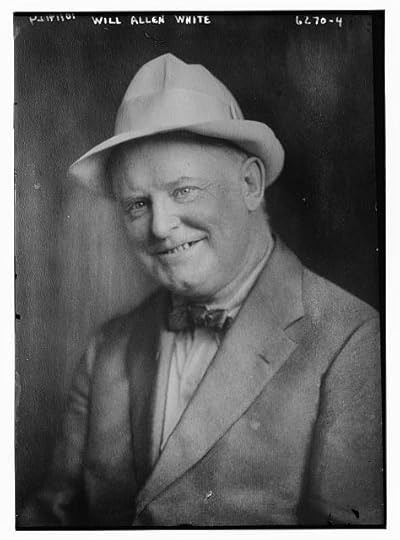
William Allen White, (born Feb. 10, 1868, Emporia, Kan., U.S.—died Jan. 29, 1944, Emporia).
American journalist known as the “Sage of Emporia,” whose mixture of tolerance, optimism, liberal Republicanism, and provincialism made him the epitome of the thoughtful small-town American. His editorial writing made his own small-town newspaper, the Emporia Gazette, internationally known, and strongly affected at least one U.S. presidential election.
White left the University of Kansas, Lawrence, in 1890 to become business manager of the El Dorado (Kan.) Republican. After writing editorials for the Kansas City Star from 1892 to 1895, he purchased the Emporia Daily and Weekly Gazette. His editorial “What’s the Matter with Kansas?” (Aug. 15, 1896) was an impassioned attack on populism, a political doctrine dedicated to agrarian interests and the free coinage of silver. Reprinted and widely circulated by the national chairman of the Republican Party, the editorial was credited with helping to elect William McKinley as president over William Jennings Bryan, the Democratic candidate and the hero of the populists.
In 1912 White repudiated the mainstream of Republicanism to support the “Bull Moose” faction (the Progressive Party) led by Theodore Roosevelt. “To an Anxious Friend,” an editorial of July 27, 1922, advocating freedom of speech, won the 1923 Pulitzer Prize for editorial writing. In 1924 White unsuccessfully ran as an independent for governor of Kansas. He wrote several novels and short-story collections, biographies of Woodrow Wilson and Calvin Coolidge, and an autobiography (posthumous, 1946). (Source: Encyclopedia Britannica)
More:
https://en.wikipedia.org/wiki/William...
https://www.kshs.org/kansapedia/willi...
http://www2.ku.edu/~jschool/school/wa...
http://journalism.ku.edu/william-alle...
https://www.emporia.edu/libsv/wawbook...
https://www.emporia.edu/libsv/wawbook...
https://www.usd253.org/home/waw/
http://www.encyclopedia.com/topic/Wil...
http://spartacus-educational.com/USAw...
(no image)William allen White's America by Walter Johnson (no photo)
 by Edward Gale Agran (no photo)
by Edward Gale Agran (no photo) by Beverly Olsen Buller (no photo)
by Beverly Olsen Buller (no photo) by Sally Foreman Griffith (no photo)
by Sally Foreman Griffith (no photo) by David Hinshaw (no photo)
by David Hinshaw (no photo) by John DeWitt McKee (no photo)
by John DeWitt McKee (no photo) by William Allen White (no photo)
by William Allen White (no photo)
 Protectionism
Protectionism
Protectionism, policy of protecting domestic industries against foreign competition by means of tariffs, subsidies, import quotas, or other restrictions or handicaps placed on the imports of foreign competitors.
Protectionist policies have been implemented by many countries despite the fact that virtually all mainstream economists agree that the world economy generally benefits from free trade.
Government-levied tariffs are the chief protectionist measures. They raise the price of imported articles, making them more expensive (and therefore less attractive) than domestic products.
Protective tariffs have historically been employed to stimulate industries in countries beset by recession or depression.
Protectionism may be helpful to emergent industries in developing nations. It can also serve as a means of fostering self-sufficiency in defense industries.
Import quotas offer another means of protectionism. These quotas set an absolute limit on the amount of certain goods that can be imported into a country and tend to be more effective than protective tariffs, which do not always dissuade consumers who are willing to pay a higher price for an imported good.
Throughout history wars and economic depressions (or recessions) have led to increases in protectionism, while peace and prosperity have tended to encourage free trade. The European monarchies favoured protectionist policies in the 17th and 18th centuries in an attempt to increase trade and build their domestic economies at the expense of other nations; these policies, now discredited, became known as mercantilism. Great Britain began to abandon its protective tariffs in the first half of the 19th century after it had achieved industrial preeminence in Europe. Britain’s spurning of protectionism in favour of free trade was symbolized by its repeal in 1846 of the Corn Laws and other duties on imported grain.
Protectionist policies in Europe were relatively mild in the second half of the 19th century, although France, Germany, and several other countries were compelled at times to impose customs duties as a means of sheltering their growing industrial sectors from British competition. By 1913, however, customs duties were low throughout the Western world, and import quotas were hardly ever used. It was the damage and dislocation caused by World War I that inspired a continual raising of customs barriers in Europe in the 1920s. During the Great Depression of the 1930s, record levels of unemployment engendered an epidemic of protectionist measures. World trade shrank drastically as a result.
The United States had a long history as a protectionist country, with its tariffs reaching their high points in the 1820s and during the Great Depression. Under the Smoot-Hawley Tariff Act (1930), the average tariff on imported goods was raised by roughly 20 percent. The country’s protectionist policies changed toward the middle of the 20th century, and in 1947 the United States was one of 23 nations to sign reciprocal trade agreements in the form of the General Agreement on Tariffs and Trade (GATT). That agreement, amended in 1994, was replaced in 1995 by the World Trade Organization (WTO) in Geneva. Through WTO negotiations, most of the world’s major trading nations have substantially reduced their customs tariffs.
The reciprocal trade agreements typically limit protectionist measures instead of eliminating them entirely, however, and calls for protectionism are still heard when industries in various countries suffer economic hardship or job losses believed to be aggravated by foreign competition. (Source: Encyclopedia Britannica)
More:
https://en.wikipedia.org/wiki/Protect...
http://www.investopedia.com/terms/p/p...
http://www.econlib.org/library/Enc/Pr...
http://www.economicsonline.co.uk/Glob...
http://www.tutor2u.net/economics/refe...
http://www.nytimes.com/topic/subject/...
http://www.dictionary.com/browse/prot...
http://www.merriam-webster.com/dictio...
http://english.cri.cn/6826/2012/05/24...
http://www.slate.com/articles/busines...
http://www.ijtef.org/papers/226-CF312...
(no image)Protection & Prosperity by George B. Curtiss (no photo)
(no image)International trade and distortions in factor markets by Stephen P. Magee (no photo)
 by Peter Drahos (no photo)
by Peter Drahos (no photo) by Friedrich List (no photo)
by Friedrich List (no photo) by William Harbutt Dawson (no photo)
by William Harbutt Dawson (no photo) by Jagdish N. Bhagwati (no photo)
by Jagdish N. Bhagwati (no photo) by Russell Roberts (no photo)
by Russell Roberts (no photo) by Takatoshi Ito (no photo)
by Takatoshi Ito (no photo) by Forrest Capie (no photo)
by Forrest Capie (no photo) by
by
 Milton Friedman
Milton Friedman by
by
 John Kenneth Galbraith
John Kenneth Galbraith
 Inauguration of William Taft
Inauguration of William Taft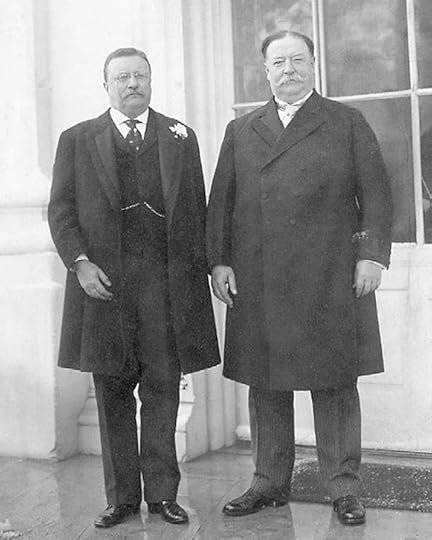
US President Theodore Roosevelt standing with William Howard Taft prior to Taft's inauguration, 1909
The inauguration of William Howard Taft as the 27th President of the United States and James S. Sherman as Vice President took place on Thursday, March 4, 1909.
Due to a blizzard the night before that brought 10 inch snow fall to Washington D.C., the inauguration ceremony was moved indoors into the United States Senate Chamber in the United States Capitol. The oath of office was administered by Chief Justice Melville Fuller, who was doing this for the sixth and final time. The new President took his oath on the century-old Bible belonging to the Supreme Court, which he used again in 1921 to take his oaths as the Chief Justice of the Supreme Court. Despite the adverse weather conditions the inaugural parade was not cancelled. 6,000 city workers used 500 wagons to remove 58,000 tons of snow to clean the parade route. For the first time in inauguration history, the First Lady Helen Herron Taft joined her husband into leading the parade from the Capitol to the White House.
An inaugural ball that evening was held at the Pension Building. It was the last official inaugural ball until 1949 as the next President Woodrow Wilson asked the city of Washington not to hold it; tradition of inaugural balls was revived in 1949 by President Harry Truman. (Source: Wikipedia)
More:
http://www.let.rug.nl/usa/presidents/...
http://www.inaugural.senate.gov/swear...
http://us-presidents.insidegov.com/q/...
https://memory.loc.gov/ammem/pihtml/p...
http://millercenter.org/president/taf...
http://clickamericana.com/eras/1900s/...
https://www.washingtonpost.com/news/c...
https://www.youtube.com/watch?v=fo7VI...
https://en.wikipedia.org/wiki/United_...
http://www.inaugural.senate.gov/days-...
http://www.inaugural.senate.gov/swear...
https://2002-2009-fpc.state.gov/40871...
(no image)The President's Medal, 1789 1977 by Neil MacNeil (no photo)
 by Anonymous (no photo)
by Anonymous (no photo) by The Presidents of the United States of America (no photo)
by The Presidents of the United States of America (no photo) by Jim Bendat (no photo)
by Jim Bendat (no photo) by Paolo E. Coletta (no photo)
by Paolo E. Coletta (no photo)
 Dingley Tariff Act
Dingley Tariff Act
Nelson Dingley, Jr.
Passed by Congress in July 1897, the Dingley Tariff Act increased duties by an average of 57 percent. Tariff rates were hiked on sugar, salt, tin cans, glassware, and tobacco, as well as on iron and steel, steel rails, petroleum, lead, copper, locomotives, matches, whisky, and leather goods.
Protective tariffs figured prominently in nineteenth century political debates. Tariffs were used in the United States as early as the 1790s. In 1828 Congress passed a bill (called the "Tariff of Abominations" by its opponents) levying government taxes on imported goods as a way of protecting the nation's burgeoning industrial interests. Thereafter tariffs were adjusted depending on current economic conditions and the political atmosphere. Republicans came to stand for higher tariffs, while the Democrats, leery that such protectionism favored monopolistic business practices in U.S. industry, championed lower rates. Since the Republicans controlled the government for most of the period between 1860 and 1890, tariffs remained high.
The presidential election of 1896, which pitted Republican candidate William McKinley (1843–1901) against Democrat William Jennings Bryan (1860–1925) was dominated by the debate over Free Silver, but the subtext of the debate centered about the tariff issue. Since they knew him to be a strong advocate of protection, the Republicans chose McKinley as their candidate. (Indeed, in 1890, McKinley had sponsored a high tariff, which bore his name.) McKinley saw the collection of tariffs as an effective way to replenish the U.S. Treasury. After winning the election he wasted no time in bringing the issue to the fore.
Calling a special session of Congress in March 1897, President McKinley (1897–1901) worked with House speaker, Thomas Brackett Reed (1839–1902), and the Ways and Means Committee Chairman, Nelson Dingley (1832–1899), to pass tariff-increase legislation in near-record time: three weeks after convening, the House passed the bill. When it reached the Senate, the moderate increases sought by McKinley were raised sharply, to an average 57 percent. The rate hike was the result of a coalition formed between eastern and western senators who agreed to higher rates on goods produced by their respective regions in exchange for the support of another region. The Dingley Tariff was the highest protective tariff in U.S. history. The legislation's effect was to raise the cost of living by nearly 25 percent between 1897 and 1907. The cost of living was mitigated only by an influx of gold from the Klondike (Yukon Territory, Canada), which helped end a four-year economic depression and begin a decade of prosperity.
The tariff was not lowered until 1913 when the Underwood Tariff reduced rates to approximately 30 percent. That same year, the ratification of the Sixteenth Amendment, which provided for a federal income tax, helped alleviate pressure for high tariffs by providing the federal government with another stream of revenue. (Source: Encyclopedia.com)
More:
https://en.wikipedia.org/wiki/Dingley...
http://www.britannica.com/biography/W...
http://www.britannica.com/event/Unite...
https://www.gilderlehrman.org/history...
http://www.american-historama.org/188...
http://www.u-s-history.com/pages/h812...
http://what-when-how.com/the-american...
https://historyengine.richmond.edu/ep...
http://www.jstor.org/stable/25118815?...
http://www.jstor.org/stable/1882308?s...
http://chestofbooks.com/finance/econo...
(no image) The Life and Times of Nelson Dingley, Jr by Edward Nelson Dingley (no photo)
(no image) Pocket edition of the Dingley Tariff Bill by Vandegrift (no photo)
(no image) Comparison of the tariffs of 1897 and 1909 in parallel columns. Showing the classification, rates of duty, and sections of the act of July 24, 1897 (Dingley tariff), and the act of August 5, 1909 (Payne tariff); based on the paragraph order of the act of by The United States of America (no photo)
 by Frank Albert Fetter (no photo)
by Frank Albert Fetter (no photo) by Gale Cengage Learning (no photo)
by Gale Cengage Learning (no photo) by John Atkinson Hobson (no photo)
by John Atkinson Hobson (no photo) by H. Wayne Morgan (no photo)
by H. Wayne Morgan (no photo) by Kevin Phillips (no photo)
by Kevin Phillips (no photo) by Lewis L. Gould (no photo)
by Lewis L. Gould (no photo)
 Senator Jonathan Dolliver of Iowa
Senator Jonathan Dolliver of Iowa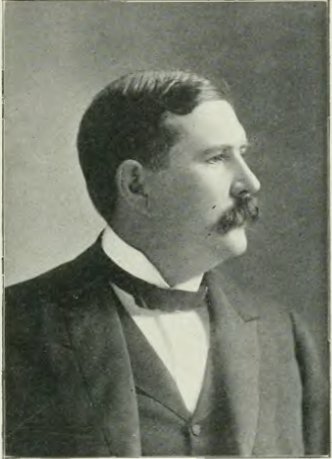
DOLLIVER, Jonathan Prentiss, (uncle of James Isaac Dolliver), a Representative and a Senator from Iowa; born near Kingwood, Preston County, Va. (now West Virginia), February 6, 1858; attended the public schools and was graduated from the University of West Virginia at Morgantown in 1876; studied law; admitted to the bar in 1878 and commenced practice in Fort Dodge, Iowa; city solicitor of Fort Dodge 1880-1887; elected as a Republican to the Fifty-first and to the five succeeding Congresses and served from March 4, 1889, to August 22, 1900, when he resigned to become Senator; chairman, Committee on Expenditures (Fifty-sixth Congress); appointed as a Republican to the United States Senate in 1900 to fill the vacancy in the term ending March 3, 1901, caused by the death of John H. Gear; reappointed and subsequently elected for the term beginning March 4, 1901; reelected in 1907 and served from August 22, 1900, until his death in Fort Dodge, Iowa, October 15, 1910; chairman, Committee on Pacific Railroads (Fifty-seventh through Fifty-ninth Congresses), Committee on Education and Labor (Fifty-ninth and Sixtieth Congresses), Committee on Agriculture and Forestry (Sixty-first Congress); interment in Oakland Cemetery. (Source: Biographical Directory of the United States Congress)
More:
https://en.wikipedia.org/wiki/Jonatha...
http://history.house.gov/People/Detai...
http://uipress.lib.uiowa.edu/bdi/Deta...
https://www.govtrack.us/congress/memb...
https://www.mapquest.com/us/ia/dolliv...
http://www.senate.gov/states/IA/timel...
http://query.nytimes.com/gst/abstract...
https://news.google.com/newspapers?ni...
http://query.nytimes.com/mem/archive-...
http://query.nytimes.com/mem/archive-...
http://query.nytimes.com/mem/archive-...
(no image) Jonathan P. Dolliver (Late a Senator from Iowa). Memorial Addresses Delivered in the Senate and House of Representatives of the United States, Sixty-First Congress, Third Session. Proceedings in the Senate February 18, 1911. Proceedings in the House Febru by United States Congress (no photo)
(no image) Winning of the Midwest by Richard J. Jensen (no photo)
(no image) The Iowa Official Register by Iowa Secretary of State (no photo)
 by Kenneth C. Martis (no photo)
by Kenneth C. Martis (no photo) by Lawrence Woods (no photo)
by Lawrence Woods (no photo) by Nancy Capace (no photo)
by Nancy Capace (no photo) by Janice Beck Stock (no photo)
by Janice Beck Stock (no photo) by David Hudson (no photo)
by David Hudson (no photo) by
by
 U.S. Congress
U.S. Congress
 Sereno Payne
Sereno Payne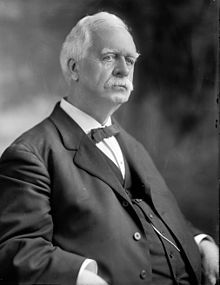
PAYNE, Sereno Elisha, a Representative from New York; born in Hamilton, Madison County, N.Y., June 26, 1843; attended the Auburn (N.Y.) Academy and was graduated from the University of Rochester, N.Y., in 1864; studied law; was admitted to the bar in 1866 and practiced in Auburn, N.Y.; city clerk of Auburn in 1867 and 1868; supervisor in 1871 and 1872; district attorney of Cayuga County 1873-1879; president of the board of education of Auburn 1879-1882; appointed a member of the American-British Joint High Commission in January 1899; elected as a Republican to the Forty-eighth and Forty-ninth Congresses (March 4, 1883-March 3, 1887); elected as a Republican to the Fifty-first Congress to fill the vacancy caused by the death of Representative Newton W. Nutting and reelected to the twelve succeeding Congresses (December 2, 1889-December 10, 1914); chairman, Committee on Merchant Marine and Fisheries (Fifty-fourth and Fifty-fifth Congresses), Committee on Ways and Means (Fifty-fifth through Sixty-first Congresses); majority leader (Fifty-sixth through Sixty-first Congresses); had been reelected to the Sixty-fourth Congress; died on December 10, 1914, in Washington, D.C.; interment in Fort Hill Cemetery, Auburn, N.Y. (Source: Biographical Directory of the United States Congress)
More:
http://memory.loc.gov/cgi-bin/query/h...
http://history.house.gov/People/Detai...
http://digitalcollections.nypl.org/it...
http://www.infoplease.com/encyclopedi...
https://en.wikipedia.org/wiki/Sereno_...
http://history.house.gov/Collection/D...
http://waysandmeans.house.gov/Legacy/...
http://waysandmeans.house.gov/
(no image) Tariff Hearings Before the Committee on Ways and Means of the House of Representatives, Sixtieth Congress, 1908-1909 by Sereno Elisha Payne (no photo)
 by Alfred E. Eckes Jr. (no photo)
by Alfred E. Eckes Jr. (no photo) by Paul Wolman (no photo)
by Paul Wolman (no photo) by Cynthia Clark Northrup (no photo) and Elaine C. Prange Turney (no photo)
by Cynthia Clark Northrup (no photo) and Elaine C. Prange Turney (no photo) by Morton Keller (no photo)
by Morton Keller (no photo) by Robert E. Dewhirst (no photo)
by Robert E. Dewhirst (no photo) by James Chace (no photo)
by James Chace (no photo) by James Holt (no photo)
by James Holt (no photo) by Robert K. Miller Jr. (no photo)
by Robert K. Miller Jr. (no photo) by
by
 Alan Brinkley
Alan Brinkley
 Payne-Aldridge Tariff Act
Payne-Aldridge Tariff Act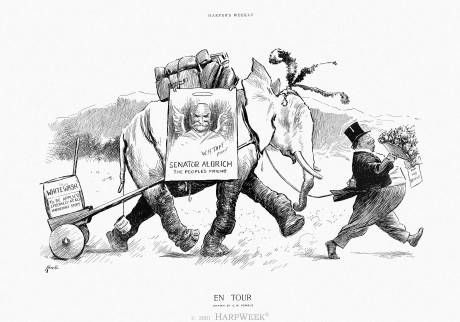
Payne-Aldrich Tariff Act, 1909, passed by the U.S. Congress. It was the first change in tariff laws since the Dingley Act of 1897; the issue had been ignored by President Theodore Roosevelt. The Republican platform of 1908 pledged revision of the tariff downward, and to this end President Taft called (1909) Congress into special session. The House promptly passed a tariff bill, sponsored by Sereno E. Payne, which called for some reduced rates. The Senate substituted a bill, fathered by Nelson W. Aldrich, which made fewer downward revisions and increased numerous rates. After a sustained attack on the Aldrich Bill by a group of insurgent Republicans in the Senate, a compromise bill was adopted, which somewhat moderated the high rates of the Aldrich bill; the measure was immediately signed by Taft. It lowered 650 tariff schedules, raised 220, and left 1,150 unchanged. Although the Payne-Aldrich Tariff Act was less aggressively protectionist than the McKinley Tariff Act (1890) and the later Dingley Act, it was, nevertheless, protectionist. (Source: Infoplease.com)
More:
https://en.wikipedia.org/wiki/Payne%E...
http://www.britannica.com/place/Phili...
http://www.britannica.com/biography/W...
http://www.american-historama.org/188...
https://www.nytimes.com/learning/gene...
https://prezi.com/nrr_5jbjdmuf/payne-...
http://study.com/academy/lesson/histo...
http://what-when-how.com/the-american...
http://www.u-s-history.com/pages/h883...
http://www.ask.com/history/payne-aldr...
https://www.boundless.com/u-s-history...
http://www.worldhistory.biz/modern-hi...
http://onlinelibrary.wiley.com/doi/10...
http://www.jstor.org/stable/2141008?s...
http://query.nytimes.com/mem/archive-...
http://www.jstor.org/stable/40489113?...
http://www.jstor.org/stable/1859508?s...
http://www.jstor.org/stable/1902605?s...
(no image) Progressivism by Reyna Eisenstark (no photo)
(no image) United States Code: 2012 Edition, Volume 12, Title 18, Crimes and Criminal Procedures to Title 19, Customs Duties, Sections 1 to 1654 by
 U.S. Congress
U.S. Congress by Cynthia Clark Northrup (no photo)
by Cynthia Clark Northrup (no photo) by Gisela Sin (no photo)
by Gisela Sin (no photo) by Edward S. Kaplan (no photo)
by Edward S. Kaplan (no photo) by F.W. Taussig (no photo)
by F.W. Taussig (no photo)
 Sixteenth Amendment to the United States Constitution
Sixteenth Amendment to the United States Constitution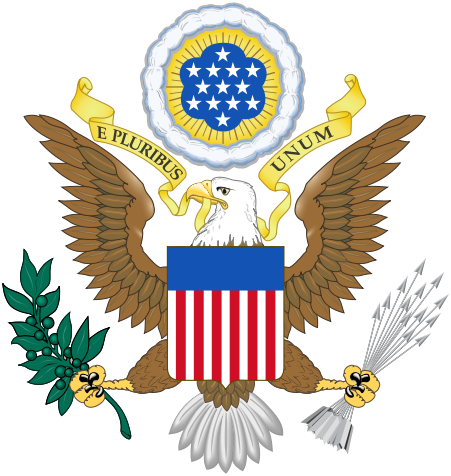
The greater coat of arms of the United States of America, as seen on the Great Seal
The Sixteenth Amendment (Amendment XVI) to the United States Constitution allows the Congress to levy an income tax without apportioning it among the states or basing it on the United States Census. This amendment exempted income taxes from the constitutional requirements regarding direct taxes, after income taxes on rents, dividends, and interest were ruled to be direct taxes in the court case of Pollock v. Farmers' Loan & Trust Co. (1895). The amendment was adopted on February 3, 1913.
The text of the Amendment:
The Congress shall have power to lay and collect taxes on incomes, from whatever source derived, without apportionment among the several States, and without regard to any census or enumeration.
(Source: Wikipedia)
More:
https://www.law.cornell.edu/constitut...
http://constitution.findlaw.com/amend...
https://www.ourdocuments.gov/doc.php?...
http://constitutioncenter.org/interac...
https://en.wikipedia.org/wiki/Pollock....
http://www.britannica.com/topic/Sixte...
http://www.investopedia.com/terms/s/s...
http://legal-dictionary.thefreedictio...
http://www.heritage.org/constitution#...
http://losthorizons.com/Documents/The...
http://www.usconstitutionday.us/p/1.html
https://www.loc.gov/rr/business/hotto...
http://www.usconstitution.net/xconst_...
http://www.annenbergclassroom.org/Fil...
http://www.dictionary.com/browse/sixt...
http://scholarlycommons.law.northwest...
http://www.dummies.com/how-to/content...
http://www.findingdulcinea.com/news/o...
http://www.taxhistory.org/www/website...
http://object.cato.org/sites/cato.org...
(no image) American Taxation Its History as a Social Force by Sidney Ratner (no photo)
(no image) The Bureau of Internal Revenue: Its History, Activities, and Organization, by Laurence Frederick Schmeckebier (no photo)
 by John F. Witte (no photo)
by John F. Witte (no photo) by Peter Eric Hendrickson (no photo)
by Peter Eric Hendrickson (no photo) by
by
 Alexander Hamilton
Alexander Hamilton by
by
 James Bovard
James Bovard
 Gifford Pinchot
Gifford Pinchot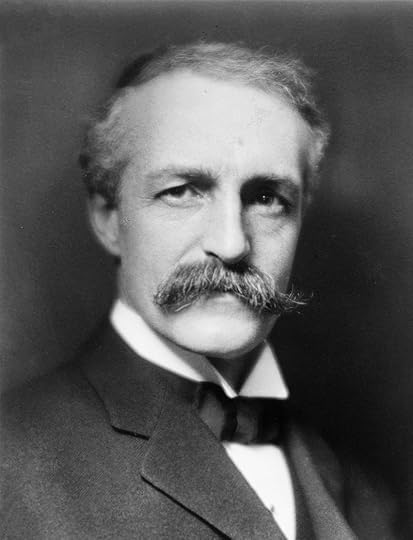
Gifford Pinchot was born in 1865 to a wealthy family. A childhood interest in nature led to a career protecting forests and Gifford Pinchot become one of the founders of the conservation movement. After graduating from Yale University, Pinchot went to France and became the first American trained in forestry. A good friend of President Theodore Roosevelt, Pinchot was named Chief Forester of the U. S. Division of Forestry and served from 1898 to 1910. With the guidance of Roosevelt and Pinchot, over 200 million acres of national forest came under scientific land management. Policies developed by Pinchot still help guide most national and state forests.
Among the many, many public officials who under my administration rendered literally invaluable service to the people of the United States, Gifford Pinchot on the whole, stood first. - President Theodore Roosevelt
Gifford Pinchot became governor of Pennsylvania in 1922. A tireless worker, he often worked 16 hours a day. Governor Pinchot created the first Pennsylvania state budget, erased the state's debt and gave himself a pay cut. Governor Pinchot was not afraid of a fight. Often at odds with political parties, Pinchot fought hard for the people. Several times a week Governor Pinchot held office hours and anyone could walk in and talk to him.
"A public official is there to serve the public and not run them." -Gifford Pinchot
Pinchot sought a second term as governor in 1930 and labored for employment improvements during the Great Depression. Governor Pinchot set up work camps throughout the state that became the models for the Civilian Conservation Corps of President Franklin Roosevelt. Governor Pinchot's work camps built 20,000 miles of paved roads for "taking the farmer out of the mud." These paved country roads made it easier for farmers to get from the farm to the market. Always progressive, Governor Pinchot was the first governor to have two women on his cabinet.
Throughout his life Gifford Pinchot spoke and campaigned for political reform and improved forest management.
"I have been governor every now and then, but I am a forester all the time." -Gifford Pinchot
During World War II, Pinchot developed a water gathering device and fishing kits for use in navy life rafts. After writing his autobiography, Gifford Pinchot died of leukemia in 1946.
In 1961, Gifford Pinchot State Park was dedicated by Governor David L. Lawrence. (Source: PA DCNR)
More:
http://www.pinchot.org/
https://en.wikipedia.org/wiki/Gifford...
http://www.foresthistory.org/ASPNET/P...
http://www.fs.usda.gov/giffordpinchot/
http://www.dcnr.state.pa.us/statepark...
http://www.u-s-history.com/pages/h939...
http://connecticuthistory.org/gifford...
https://www.gptaskforce.org/
http://www.encyclopedia.com/topic/Gif...
http://ehistory.osu.edu/exhibitions/1...
 by Char Miller (no photo)
by Char Miller (no photo) by Gifford Pinchot (no photo)
by Gifford Pinchot (no photo) by Gifford Pinchot (no photo)
by Gifford Pinchot (no photo) by Gifford Pinchot (no photo)
by Gifford Pinchot (no photo) by Harold Steen (no photo)
by Harold Steen (no photo) by Martin Nelson McGeary (no photo)
by Martin Nelson McGeary (no photo) by Peter Anderson (no photo)
by Peter Anderson (no photo)
 Tennis Cabinet (Theodore Roosevelt)
Tennis Cabinet (Theodore Roosevelt)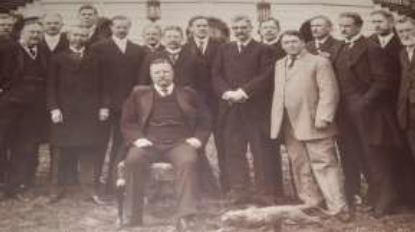
The "Tennis Cabinet" began early in Roosevelt's presidency as a group of men who, as the name would suggest, played tennis with the president in the afternoons. The crew started out innocently enough, but it wasn't long before TR decided that smacking a ball over a net with a racket for a few hours was tedious. Not only that, there was almost no risk for serious injury, which meant the thrill-seeking president wasn't getting his much needed adrenaline rush to balance out the boring hours he had to log running the United States.
(Source: The Post Game)
More:
http://www.sparknotes.com/biography/t...
http://www.loc.gov/pictures/item/2009...
http://www.theodorerooseveltcenter.or...
http://edweb.tusd.k12.az.us/sandre/Pr...
https://news.google.com/newspapers?ni...
http://tennisclub.gsfc.nasa.gov/white...
http://www.bartleby.com/170/17.html
 by Nathan Miller (no photo)
by Nathan Miller (no photo) by Kathleen Dalton (no photo)
by Kathleen Dalton (no photo) by Henry F. Pringle (no photo)
by Henry F. Pringle (no photo) by
by
 Edmund Morris
Edmund Morris by
by
 Theodore Roosevelt
Theodore Roosevelt
 Secretary of the Interior - James Garfield
Secretary of the Interior - James Garfield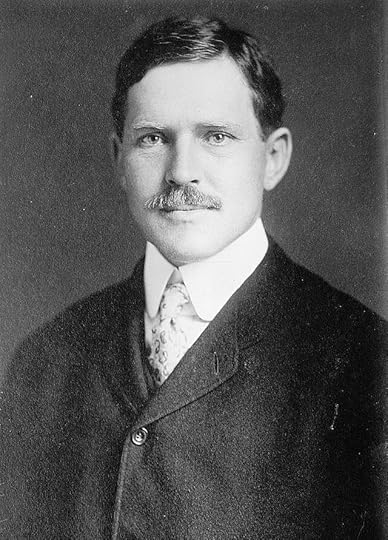
James Randolph Garfield, the son of President James Abram Garfield, was born in Hiram, Ohio, on October 17, 1865, before moving to the White House.
He attended local schools in Washington, D.C., and graduated from Williams College in 1885. Garfield studied law at Columbia University while practicing in the New York City law office of Bangs and Stetson. He earned admission to the Ohio bar in 1888 and went into practice with his elder brother. Garfield then entered politics, serving in the Ohio State Senate between 1896 and 1899.
He was appointed to sit on the U.S. Civil Service Commission from 1902 to 1903 before becoming commissioner of corporations in the Department of Commerce & Labor in February 1903. President Theodore Roosevelt appointed Garfield secretary of the interior in March 1907, a cabinet post he would hold until the end of the Roosevelt administration. Garfield died at the age of 84 on March 25, 1950. (Source: Miller Center)
More:
https://en.wikipedia.org/wiki/James_R...
http://cabinet-members.insidegov.com/...
http://www.findagrave.com/cgi-bin/fg....
https://www.doi.gov/whoweare/past_sec...
https://www.loc.gov/item/88716064/
http://www.sfmuseum.org/hetch/hetchy4...
http://query.nytimes.com/gst/abstract...
https://en.wikisource.org/wiki/The_En...
(no image) Public Service by James Rudolph Garfield (no photo)
 by Robert W. Righter (no photo)
by Robert W. Righter (no photo) by Stephen Bogener (no photo)
by Stephen Bogener (no photo) by Donald J. Pisani (no photo)
by Donald J. Pisani (no photo) by
by
 Kevin Starr
Kevin Starr by
by
 Ruth Tenzer Feldman
Ruth Tenzer Feldman by
by
 Theodore Roosevelt
Theodore Roosevelt
 Richard Ballinger
Richard Ballinger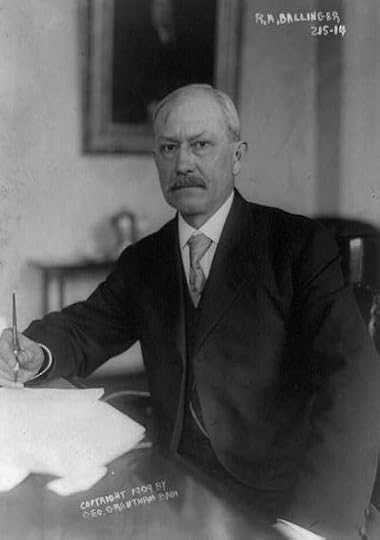
Richard Achilles Ballinger (born July 9, 1858, Boonesboro, Iowa, U.S.—died June 6, 1922, Seattle, Washington).
U.S. secretary of the interior (1909–11) whose land-use policy contributed to the rift between the conservative and progressive factions in the Republican Party.
As the reform mayor of Seattle (1904–06), Ballinger attracted the attention of the Theodore Roosevelt administration, and in 1907 he was appointed commissioner of the General Land Office. In 1909 he became secretary of the interior in the cabinet of Pres. William Howard Taft. During his two years in that post, Ballinger sought to make public resources more available for private exploitation and became embroiled in a highly publicized controversy with Gifford Pinchot, chief of the Division of Forestry in the Department of Agriculture. Pinchot, citing allegations brought by a public-land inspector, charged that Ballinger had cooperated with private interests in a fraudulent scheme to plunder coal reserves in Alaska. Taft supported his secretary and dismissed both Pinchot and his informant, Louis Glavis. Although a congressional investigation exonerated Ballinger, the episode left a residue of bitterness between the conservative Republicans led by Taft and the progressives loyal to Theodore Roosevelt.
(Source: Encyclopedia Britannica)
More:
http://archiveswest.orbiscascade.org/...
https://en.wikipedia.org/wiki/Richard...
http://millercenter.org/president/ess...
http://www.infoplease.com/encyclopedi...
http://digital.lib.washington.edu/fin...
https://www.geni.com/people/Richard-A...
https://www.google.com/culturalinstit...
http://www.findagrave.com/cgi-bin/fg....
https://www.doi.gov/whoweare/past_sec...
(no image) The Illustrated Guide To The Houses Of America by Richard Achilles Ballinger (no photo)
 by Richard Achilles Ballinger (no photo)
by Richard Achilles Ballinger (no photo) by Rachel Scheuering (no photo)
by Rachel Scheuering (no photo) by William Raimond Baird (no photo)
by William Raimond Baird (no photo) by Richard C. Berner (no photo)
by Richard C. Berner (no photo) by
by
 Doris Kearns Goodwin
Doris Kearns Goodwin
 Pinchot–Ballinger controversy
Pinchot–Ballinger controversy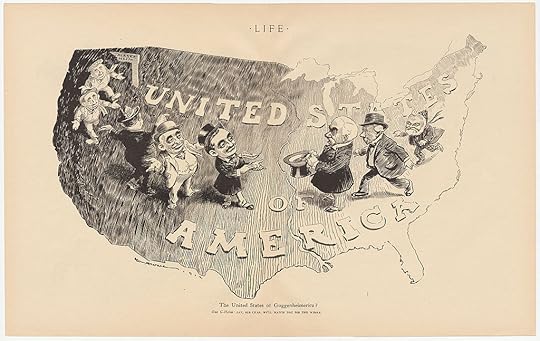
This satirical political cartoon had its origin in the Pinchot–Ballinger controversy
The Pinchot–Ballinger Controversy, also known as the "Ballinger Affair", was a dispute between U.S. Forest Service Chief Gifford Pinchot and U.S. Secretary of the Interior Richard Achilles Ballinger that contributed to the split of the Republican Party before the 1912 presidential election and helped to define the U.S. conservation movement in the early 20th century.
In March 1909, President William Howard Taft began his administration by replacing Theodore Roosevelt's Secretary of the Interior, James Rudolph Garfield, with Richard Ballinger, a former Mayor of Seattle who had served as Commissioner of the General Land Office (GLO) under Secretary Garfield.
Ballinger's appointment was a disappointment to conservationists, who interpreted the replacement of Garfield as a break with Roosevelt administration policies on conservationism.
Within weeks of taking office, Ballinger reversed some of Garfield's policies, restoring 3 million acres (12,000 km²) to private use.
By July 1909, Gifford Pinchot, who had been appointed by President William McKinley to head the USDA Division of Forestry in 1898, and who had run the U.S. Forest Service since it had taken over management of forest reserves from the General Land Office in 1905, became convinced that Ballinger intended to "stop the conservation movement".
In August, speaking at the annual meeting of the National Irrigation Congress in Spokane, Washington, he accused Ballinger of siding with private trusts in his handling of water power issues. At the same time, he helped to arrange a meeting between President Taft and Louis Glavis, chief of the Portland, Oregon, Field Division of the GLO.
Glavis met with the president at Taft's summer retreat in Beverly, Massachusetts, and presented him with a 50-page report accusing Ballinger of an improper interest in his handling of coal field claims in Alaska.
Glavis claimed that Ballinger, first as Commissioner of the General Land Office, and then as Secretary of the Interior, had interfered with investigations of coal claim purchases made by Clarence Cunningham of Idaho.
In 1907, Cunningham had partnered with the Morgan-Guggenheim "Alaska Syndicate" to develop coal interests in Alaska. The GLO had launched an anti-trust investigation, headed by Glavis. Ballinger, then head of the GLO, rejected Glavis' findings and removed him from the investigation.
In 1908, Ballinger stepped down from the GLO, and took up a private law practice in Seattle. Cunningham became a client.
Convinced that Ballinger, now head of the United States Department of Interior, had a personal interest in obstructing an investigation of the Cunningham case, Glavis had sought support from the U.S. Forest Service, whose jurisdiction over the Chugach National Forest included several of the Cunningham claims. He received a sympathetic response from Alexander Shaw, Overton Price and Pinchot, who helped him to prepare the presentation for Taft.
Taft consulted with Attorney General George Wickersham before issuing a public letter in September, exonerating Ballinger and authorizing the dismissal of Glavis on grounds of insubordination. At the same time, Taft tried to conciliate Pinchot and affirm his administration's pro-conservation stance.
Glavis took his case to the press. In November, Collier's Weekly published an article elaborating his allegations, entitled The Whitewashing of Ballinger: Are the Guggenheims in Charge of the Department of the Interior?
In January 1910, Pinchot sent an open letter to Senator Jonathan P. Dolliver, who read it into the Congressional Record. Pinchot praised Glavis as a "patriot", openly rebuked Taft, and asked for Congressional hearings into the propriety of Ballinger's dealings.
Pinchot was promptly fired, but from January to May, the United States House of Representatives held hearings on Ballinger.
Ballinger was cleared of any wrongdoing, but criticized from some quarters for favoring private enterprise and the exploitation of natural resources over conservationism.
The firing of Pinchot, a close friend of Teddy Roosevelt, alienated many progressives within the Republican party and drove a wedge between Taft and Roosevelt himself, leading to the split of the Republican Party in the 1912 presidential election.
(Source: Wikipedia)
More:
https://quizlet.com/4706087/apush-pro...
http://www.american-historama.org/188...
http://www.examiner.com/article/the-t...
http://study.com/academy/lesson/the-p...
http://www.u-s-history.com/pages/h985...
http://www.history.com/this-day-in-hi...
https://www.boundless.com/u-s-history...
http://phr.ucpress.edu/content/3/3/323
http://www.raabcollection.com/william...
http://karl4soccer.tripod.com/id14.html
https://louisville.edu/law/library/sp...
 by Char Miller (no photo)
by Char Miller (no photo) by Rachel Scheuering (no photo)
by Rachel Scheuering (no photo) by Amy Handlin (no photo)
by Amy Handlin (no photo) by Samuel P. Hays (no photo)
by Samuel P. Hays (no photo) by Gifford Pinchot (no photo)
by Gifford Pinchot (no photo) by
by
 Louis D. Brandeis
Louis D. Brandeis
 The US Commerce Court - 1910 - 1913
The US Commerce Court - 1910 - 1913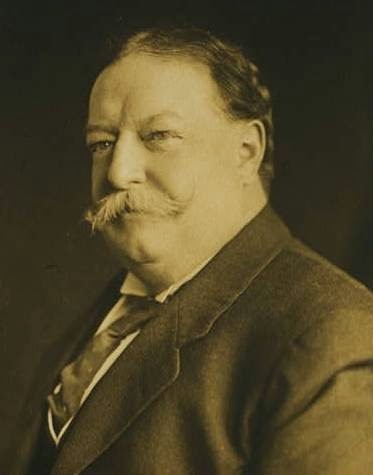
William Howard Taft
The Commerce Court of the United States was a short-lived federal trial court. It was created by the Mann-Elkins Act in 1910 and abolished three years later.
The Commerce Court was a specialized court, given jurisdiction over cases arising from orders of the Interstate Commerce Commission and empowered with judicial review of those orders. The United States Supreme Court was given appellate jurisdiction over the Commerce Court.
The Commerce Court also had one of the more unusual structures in United States judicial history. There were five judges serving staggered five-year terms on the Commerce Court. These judges were, nonetheless, Article III judges, and were to be reassigned to an appellate court when their term on the Commerce Court expired. Moreover, even while they served on the Commerce Court, they also served as an at-large appellate judge and could be assigned by the Chief Justice of the United States to any appellate court to help relieve the workload.
Once the court was abolished, the four remaining judges of the court served out their lifetime appointment as at-large appellate judges. (The fifth judge of the court, Robert Archbald, had been impeached and removed from office.)
All of the judges who served on the Commerce Court were appointed by President William Howard Taft. The court had no chief judge, and no judge on the court achieved senior status. All of the judges ended their service with the court upon its abolition, except for Robert Wodrow Archbald, who was impeached and convicted for corrupt practices, specifically soliciting and receiving gifts from persons doing business before the court. (Source: Wikipedia)
More:
https://en.wikipedia.org/wiki/Mann%E2...
http://www.fjc.gov/history/home.nsf/p...
http://www.archives.gov/research/guid...
http://legalhistoryblog.blogspot.hr/2...
http://www.encyclopedia.com/doc/1G2-3...
https://babel.hathitrust.org/cgi/pt?i...
http://www.historycentral.com/documen...
(no image) Railway Regulation; An Analysis of the Underlying Problems in Railway Economics from the Standpoint of Government Regulations by Isaiah Leo Sharfman (no photo)
(no image) Guide to Research in the Federal Judicial History by Federal Judicial Center (no photo)
 by Gerald Berk (no photo)
by Gerald Berk (no photo) by Gabriel Kolko (no photo)
by Gabriel Kolko (no photo) by William G. Thomas (no photo)
by William G. Thomas (no photo) by Eugene Allen Gilmore (no photo)
by Eugene Allen Gilmore (no photo) by New York University (no photo)
by New York University (no photo) by Matthew Manweller (no photo)
by Matthew Manweller (no photo) by Lawrence Baum (no photo)
by Lawrence Baum (no photo) by Paul Finkelman (no photo)
by Paul Finkelman (no photo)
 Mann–Elkins Act
Mann–Elkins Act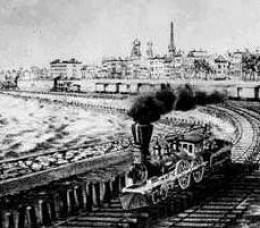
The Mann–Elkins Act was a 1910 United States federal law that was among the Progressive era reforms.
Progressives also regulated shipping prices and filed criminal actions for the railroads.
The Act extended the authority of the Interstate Commerce Commission (ICC) to regulate the telecommunications industry, and designated telephone, telegraph and wireless companies as common carriers.
During William H. Taft's administration, the federal government moved to strengthen its regulatory control over the railroad industry by the passage of the Mann–Elkins Act.
Supported by President William Howard Taft, the law also expanded on the powers granted to the ICC in the 1906 Hepburn Act. The ICC was authorized to investigate proposed railroad rate increases and suspend them if warranted. The "long-and-short haul" clause of the original Interstate Commerce Act (1887) was strengthened to prohibit railroads from charging passengers more for a short distance trip, compared to a longer distance ride, over the same route, unless specifically approved by the ICC.
The Act also created the short-lived United States Commerce Court for adjudication of railway disputes. The Court presided until 1913, when it was abolished by Congress.
(Source: Wikipedia)
More:
https://www.law.cornell.edu/topn/mann...
http://broom02.revolvy.com/main/index...
http://itlaw.wikia.com/wiki/Mann-Elki...
http://www.purplemotes.net/2010/06/18...
http://study.com/academy/lesson/the-e...
http://www.encyclopedia.com/topic/Man...
http://commercial.laws.com/commerce/m...
http://www.american-historama.org/188...
http://www.worldhistory.biz/modern-hi...
http://www.ask.com/history/mann-elkin...
http://homepages.uc.edu/~armstrty/sta...
(no image) Railway Regulation; An Analysis of the Underlying Problems in Railway Economics from the Standpoint of Government Regulations by Isaiah Leo Sharfman (no photo)
(no image) Enterprise Denied: Origins of the Decline of American Railroads, 1897-1917 by Albro Martin (no photo)
 by Eugene Allen Gilmore (no photo)
by Eugene Allen Gilmore (no photo) by Thomas C. Leonard (no photo)
by Thomas C. Leonard (no photo) by Matthew Manweller (no photo)
by Matthew Manweller (no photo) by Peter Zavodnyik (no photo)
by Peter Zavodnyik (no photo) by Jim Powell (no photo)
by Jim Powell (no photo) by William Z. Ripley (no photo)
by William Z. Ripley (no photo) by Lewis L. Gould (no photo)
by Lewis L. Gould (no photo)
 John Fitzgerald of Brooklyn
John Fitzgerald of Brooklyn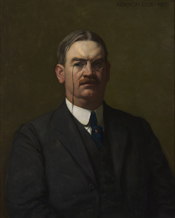
FITZGERALD, John Joseph, a Representative from New York; born in Brooklyn, N.Y., March 10, 1872; attended the public schools, La Salle Military Academy (formerly Sacred Heart Academy), and was graduated from Manhattan College, New York City, in 1891; studied law in the New York Law School; was admitted to the bar in 1893 and commenced practice in New York City; delegate to the Democratic National Conventions from 1900 to 1928; trustee of Manhattan College in New York City; elected as a Democrat to the Fifty-sixth and to the nine succeeding Congresses and served from March 4, 1899, until December 31, 1917, when he resigned to resume the practice of law; chairman, Committee on Appropriations (Sixty-second through Sixty-fifth Congresses); appointed county judge of Kings County in March 1932, elected in November 1932, and served until his retirement on December 31, 1942; resumed the private practice of law; died in Brooklyn, N.Y., May 13, 1952; interment in St. John’s Cemetery, Middle Village, N.Y.
(Source: Biographical Directory of the United States Congress)
More:
https://en.wikipedia.org/wiki/John_J....
https://commons.wikimedia.org/wiki/Fi...
http://history.house.gov/People/Detai...
http://www.findagrave.com/cgi-bin/fg....
http://bioguide.congress.gov/scripts/...
http://www.ranker.com/list/new-york-p...
http://www.ranker.com/list/brooklyn-p...
http://www.ranker.com/list/famous-new...
http://www.ranker.com/list/famous-peo...
http://alchetron.com/John-J-Fitzgeral...
http://www.revolvy.com/main/index.php...
(no image) Indian appropriation bill by United States. Congress. Senate. Committee on Indi Affairs (no photo)
(no image) Perverting the Promised Land by Charles Wilcox (no photo)
 by House (U.S.), Committee on Appropriations (no photo)
by House (U.S.), Committee on Appropriations (no photo) by United States Civil Service Commission (no photo)
by United States Civil Service Commission (no photo) by Gabriel Rosenberg (no photo)
by Gabriel Rosenberg (no photo) by
by
 U.S. Congress
U.S. Congress
 Sir Edward Grey - the British Foreign Secretary
Sir Edward Grey - the British Foreign Secretary
Sir Edward Grey, 3rd Baronet, also called (from 1916) 1st Viscount Grey of Fallodon (born April 25, 1862, London, England—died September 7, 1933, Fallodon, near Embleton, Northumberland, England).
British statesman whose 11 years (1905–16) as British foreign secretary, the longest uninterrupted tenure of that office in history, were marked by the start of World War I, about which he made a comment that became proverbial:
“The lamps are going out all over Europe; we shall not see them lit again in our lifetime.”
A relative of the 2nd Earl Grey, the prime minister who carried the Reform Bill of 1832, Edward Grey was reared in a strong Whig–Liberal tradition. He succeeded to his grandfather’s baronetcy and estate in 1882. From 1885 to 1916, when he was created a viscount, he sat in the House of Commons, and in 1923–24, despite increasing blindness, he led the Liberal opposition in the House of Lords. When his party divided over the South African War (1899–1902), he sided with the Liberal imperialists, led by H.H. Asquith.
On December 10, 1905, Grey began his service as foreign secretary, under the new Liberal prime minister, Sir Henry Campbell-Bannerman. During the Morocco crisis (1905–06), Grey continued the policy of his predecessor, the 5th marquess of Lansdowne, supporting France against Germany, but with reservations that caused serious diplomatic confusion up to the outbreak of war in 1914. Grey allowed it to be known that, in the event of a German attack, Britain would aid France. He also authorized conferences between the British and French general staffs, but (with the Prime Minister’s permission) withheld that decision from the cabinet to avoid criticism by the more radical ministers. He maintained the British alliance with Japan and, in 1907, concluded an agreement with Russia.
When Asquith became prime minister (April 5, 1908), Grey retained his office. In the 1911 Moroccan (Agadir) crisis, he indicated that Britain would defend France against Germany, and in November 1912 he made similar statements in private correspondence with Paul Cambon, French ambassador in London. He made no objection, however, when Asquith told the House of Commons that Great Britain was in no way bound. France and Russia, nonetheless, counted on British armed assistance and dealt with Germany as if Grey had unequivocally promised it.
After the assassination of the Austrian archduke Franz Ferdinand at Sarajevo (June 28, 1914), Grey and the German emperor William II independently proposed that Austria-Hungary, without resorting to war, obtain satisfaction from Serbia by occupying Belgrade, which the Serbian government had abandoned. When all peace moves failed, Grey won over a divided cabinet to accept the war by tying British intervention to Germany’s invasion of neutral Belgium rather than to Britain’s dubious alliance with France. He was responsible for the secret Treaty of London (April 26, 1915), by which Italy joined Great Britain and her allies, and tried to solicit U.S. support for the Allied cause.
On December 5, 1916, Grey retired from office along with Asquith, and he was awarded a viscountcy. In 1919 he was sent on a special mission to the United States in a futile attempt to secure U.S. entry into the League of Nations. His memoirs, Twenty-five Years, 1892–1916, appeared in 1925. (Source: Encyclopedia Britannica)
More:
https://en.wikipedia.org/wiki/Edward_...
https://www.gov.uk/government/history...
http://www.firstworldwar.com/bio/grey...
http://www.1914-1918.net/greys_speech...
http://www.telegraph.co.uk/comment/co...
http://spartacus-educational.com/FWWg...
http://www.e-ir.info/2011/07/31/how-e...
https://www.parliament.uk/about/livin...
http://wwi.lib.byu.edu/index.php/Sir_...
https://www.youtube.com/watch?v=wrePa...
(no image) British Strategy and Politics 1914 to 1918 by Paul Guinn (no photo)
(no image) Twenty-Five Years, 1892-1916 by
 Edward Grey
Edward Grey by Keith Robbins (no photo)
by Keith Robbins (no photo) by F.H. Hinsley (no photo)
by F.H. Hinsley (no photo) by Michael Waterhouse (no photo)
by Michael Waterhouse (no photo) by
by
 Edward Grey
Edward Grey by
by
 Edward Grey
Edward Grey by
by
 Edward Grey
Edward Grey
 New Nationalism of Theodore Roosevelt
New Nationalism of Theodore Roosevelt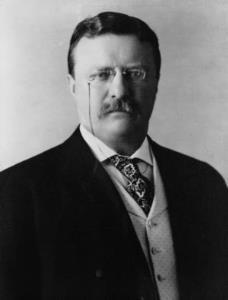
New Nationalism was Theodore Roosevelt's Progressive political philosophy during the 1912 election.
Roosevelt made the case for what he called the New Nationalism in a speech in Osawatomie, Kansas, on September 1, 1910. The central issue he argued was government protection of human welfare and property rights, but he also argued that human welfare was more important than property rights. He insisted that only a powerful federal government could regulate the economy and guarantee social justice, and that a President can only succeed in making his economic agenda successful if he makes the protection of human welfare his highest priority.
Roosevelt believed that the concentration in industry was a natural part of the economy. He wanted executive agencies (not the courts) to regulate business. The federal government should be used to protect the laboring men, women and children from exploitation.
In terms of policy, Roosevelt's platform included a broad range of social and political reforms advocated by progressives. (Source: Wikipedia)
More:
http://chapin.williams.edu/exhibits/r...
http://www.nationalreview.com/article...
http://www.shmoop.com/theodore-teddy-...
http://www.heritage.org/initiatives/f...
http://www.encyclopedia.com/topic/The...
http://www.pbs.org/wgbh/americanexper...
https://www.youtube.com/watch?v=xrpB-...
http://www.kshs.org/p/theodore-roosev...
 by James R. Holmes (no photo)
by James R. Holmes (no photo) by Arthur G. Sharp (no photo)
by Arthur G. Sharp (no photo) by Cram101 Textbook Reviews (no photo)
by Cram101 Textbook Reviews (no photo) by
by
 Theodore Roosevelt
Theodore Roosevelt by
by
 Theodore Roosevelt
Theodore Roosevelt
 Attorney General George Wickersham
Attorney General George Wickersham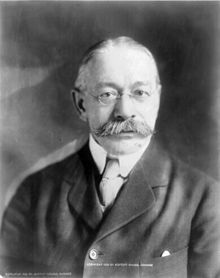
George Woodward Wickersham (September 19, 1858 – January 25, 1936) was an American lawyer and Presidential Cabinet Secretary. He was the father of Cornelius Wendell Wickersham, US Army Brigadier General and Lawyer.
Born in Pittsburgh, Pennsylvania, he graduated from the University of Pennsylvania.
In 1883 Wickersham entered the old established law firm of Strong and Cadwalader, and became a partner four years later.
He held the office of Attorney General of the United States from 1909 to 1913, in the administration of President William Howard Taft. From 1914 to 1916, Wickersham served as president of the Association of the Bar of the City of New York.
Wickersham was named by Woodrow Wilson to serve on the War Trade Board to Cuba soon after the United States entered World War I.
In 1929, Herbert Hoover named him to the National Commission on Law Observance and Enforcement, the so- called Wickersham Commission.
Wickersham was President of the Council on Foreign Relations from 1933-1936.
Wickersham died in New York City in 1936, and was interred in Brookside Cemetery in Englewood, New Jersey.
Since 1996, the Friends of the Law Library of the Library of Congress have presented an annual award named for Wickersham. (Source: Wikipedia)
More:
http://legal-dictionary.thefreedictio...
https://www.fbi.gov/about-us/history/...
https://www.geni.com/people/George-W-...
http://millercenter.org/president/ess...
https://www.justice.gov/ag/usdoj-ag-g...
http://www.nndb.com/people/384/000167...
http://cabinet-members.insidegov.com/...
http://law.jrank.org/pages/12346/Wick...
http://www.cfr.org/about/history/cfr/...
http://politicalgraveyard.com/bio/whi...
 by Federal Bureau of Investigation (F.B.I.) (no photo)
by Federal Bureau of Investigation (F.B.I.) (no photo) by George Woodward Wickersham (no photo)
by George Woodward Wickersham (no photo) by David M. Rabban (no photo)
by David M. Rabban (no photo) by Melvyn Dubofsky (no photo)
by Melvyn Dubofsky (no photo) by John J. Fay (no photo)
by John J. Fay (no photo) by Cornell W. Clayton (no photo)
by Cornell W. Clayton (no photo) by
by
 Bruce E. Baker
Bruce E. Baker by
by
 Alfred D. Chandler Jr.
Alfred D. Chandler Jr.
 James Smith Jr.
James Smith Jr.
SMITH, James, Jr., a Senator from New Jersey; born in Newark, N.J., June 12, 1851; attended private schools and St. Mary’s College, Wilmington, Del.; engaged in the dry-goods and importing business, later becoming a manufacturer of leather in Newark, N.J.; member of the board of aldermen of Newark 1883-1887; declined the nomination for mayor of Newark in 1884; president of the first board of works of Newark; elected as a Democrat to the United States Senate and served from March 4, 1893, to March 3, 1899; was not a candidate for reelection; chairman, Committee on the Organization, Conduct and Expenditures of Executive Departments (Fifty-third Congress); resumed the manufacture of leather, and also engaged in banking and newspaper publishing; unsuccessful candidate for election to the United States Senate in 1911; died in Newark, N.J., April 1, 1927; interment in Holy Sepulcher Cemetery.
(Source: Biographical Dictionary of the United States Congress)
More:
https://en.wikipedia.org/wiki/James_S....
http://query.nytimes.com/gst/abstract...
http://www.bluejersey.com/2009/02/woo...
https://news.google.com/newspapers?ni...
https://www.geni.com/people/James-Smi...
http://www.findagrave.com/cgi-bin/fg....
(no image)Leon Abbett's New Jersey: The Emergence of the Modern Governor (Memoirs of the American Philosophical Society) by Richard A. Hogarty (no photo)
 by Thomas A. McCabe (no photo)
by Thomas A. McCabe (no photo) by Marc Mappen (no photo)
by Marc Mappen (no photo) by Marc Mappen (no photo)
by Marc Mappen (no photo) by Michael J. Birkner (no photo)
by Michael J. Birkner (no photo) by Ronald J. Pestritto (no photo)
by Ronald J. Pestritto (no photo) by John Milton Cooper Jr. (no photo)
by John Milton Cooper Jr. (no photo) by
by
 U.S. Congress
U.S. Congress
 Frank Arthur Vanderlip, Sr.
Frank Arthur Vanderlip, Sr.
Frank Arthur Vanderlip, Sr. (November 17, 1864 – June 30, 1937) was an American banker. He was Assistant Secretary of the Treasury from 1897-1901, and was president of the National City Bank from 1909 to 1919. Vanderlip created the Scarborough School at his property, Beechwood in Briarcliff Manor, New York and founded the 16,000-acre-area (6,500 ha) collectively known as Palos Verdes, California.
Frank A. Vanderlip was born in Aurora, Illinois on November 17, 1864 to Charles Edmond Vanderlip and Charlotte Louise Woodworth Vanderlip. His early life was spent on the family farm in nearby Oswego, Illinois until his father died in 1878. Vanderlip, his mother and his sister then moved into Aurora, where he went to work at the age of 16 at a lathe in a factory.
After one year at the University of Illinois at Champaign and another stint at the factory lathe, Vanderlip became city editor of the Aurora Evening Post in 1885.
Under the guidance of economist Joseph French Johnson, Vanderlip took a position at a financial investigative service for stock investors in Chicago in 1886. Three years later, in 1889, he became a reporter for the Chicago Tribune, and was promoted to financial editor in 1892. While at the Tribune, Mr. Vanderlip took an extend course in political economy at the newly founded University of Chicago.
This brought him to the notice of Lyman J. Gage, who became Secretary of the Treasury under President of the United States William McKinley in 1897. Gage brought Vanderlip with him to Washington as his private secretary. Six weeks later, Gage promoted Vanderlip to be Assistant Secretary of the Treasury. As directed by the War Revenue Act of 1898, Vanderlip was put in charge of sending out the $200 million bond issue to fund the war and procuring the subscriptions, with the special direction to offer the bonds to the smallest subscribers first, so that the public would feel invested in the fight. Vanderlip and his team of 600 to 700 clerks succeeded in selling out the bond issue in just over 30 days, closing out the bond drive on July 14, 1898.
This success brought Vanderlip to the attention of James J. Stillman, president of National City Bank of New York, the country's largest bank. Vanderlip became vice president in 1902, and was president from 1909 until 1919.
Always a man of grand visions, Vanderlip purchased several large parcels of property, along with other investors. The Vanderlip-Stillman-Tilghman syndicate bought 15,000 acres (6,100 ha) of land at the mouth of the Brazos River in Texas, in 1912, and founded the city of Freeport. After several smaller land investments, Vanderlip spearheaded a group that bought 16,000 acres (6,500 ha) now known collectively as Palos Verdes, California.
His last major purchase was the hamlet of Sparta, Ossining, a quarter-mile from his Beechwood home. He bought about 70 homes and business buildings in 1920 because he believed it was a run-down place. Tearing down dilapidated homes, turning some to face the river, and even moving at least one across the street, Vanderlip beautified and gentrified Sparta.
During the Teapot Dome Scandal hearings in 1924, Vanderlip testified about what he believed to be a scandal during the administration of President Warren G. Harding. Because he spoke out vigorously in defense of the public's right to know about various issues, Vanderlip was forced to resign from the boards of directors of almost 40 companies. He subsequently led a quieter life at his homes in New York and California.
He died on June 30, 1937 at age 72 in New York Hospital. (Source: Wikipedia)
More:
https://en.wikipedia.org/wiki/Jekyll_...
https://www.geni.com/people/Frank-A-V...
http://gutenberg.us/articles/frank_a....
http://www.smokershistory.com/NatlCit...
http://www.loc.gov/pictures/item/hec2...
http://www.westchesterhistory.com/ind...
http://frankvanderlip.com/frankvander...
http://www.federalreservehistory.org/...
http://modernhistoryproject.org/mhp?A...
http://www.jekyllclub.com/2010/11/the...
https://www.bloomberg.com/view/articl...
http://www.bibliotecapleyades.net/soc...
https://www.loc.gov/item/hec2013009259/
http://www.ebhsoc.org/journal/index.p...
http://query.nytimes.com/gst/abstract...
http://www.academia.edu/10036910/The_...
(no image) The Influence of Frank A. Vanderlip and The National City Bank on American Commerce and Foreign Policy, 1910-1920 by Robert S. Mayer (no photo)
(no image) From Farm Boy to Financier by Frank A. Vanderlip (no photo)
 by Susie J Pak (no photo)
by Susie J Pak (no photo) by B.C. Forbes (no photo)
by B.C. Forbes (no photo) by Jerry W. Markham (no photo)
by Jerry W. Markham (no photo) by Vicki A. Mack (no photo)
by Vicki A. Mack (no photo) by Richard T. McCulley (no photo)
by Richard T. McCulley (no photo) by Rondo Cameron (no photo)
by Rondo Cameron (no photo) by Jerry Evans (no photo)
by Jerry Evans (no photo) by Tyler E. Bagwell (no photo)
by Tyler E. Bagwell (no photo) by Bruce L. Megowan (no photo)
by Bruce L. Megowan (no photo) by William L. Silber (no photo)
by William L. Silber (no photo) by
by
 Nomi Prins
Nomi Prins by
by
 Michael Perino
Michael Perino
 Henry Pomeroy Davison
Henry Pomeroy Davison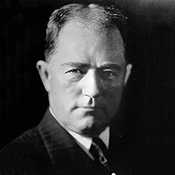
Henry Pomeroy Davison was a key figure in the US banking industry at the beginning of the twentieth century and worked closely with Sen. Nelson Aldrich to develop a proposal for a new central banking system. Many of this plan’s provisions were eventually included in the Federal Reserve Act of 1913.
Davison was born in 1867 in Troy, Pennsylvania, today a town of about 1,200 people. His mother died when he was young, and he and his three siblings were raised by aunts and uncles. After graduating from high school, he worked as an errand boy at his uncle’s small bank. A few years later, he moved to New York City and took a job at the Astor Place Bank. He rose quickly through the banking world, and by age 33 he was named president of Liberty National Bank. In 1903, he was one of the founders of the Bankers Trust Company of New York, which became the second-largest trust in the country. In 1902, George F. Baker hired Davison as vice president of First National Bank.
During the Panic of 1907, Davison worked closely with J.P. Morgan to help quell the turmoil. The experience prompted Morgan to ask Davison to join his firm, which he did as a partner in 1908.
After the Panic of 1907 spurred Aldrich to take up banking reform, he hired Davison as an advisor to the National Monetary Commission. Davison traveled with Aldrich to meet with European bankers and central bankers, and in 1910 he helped the senator organize a meeting with a small group of banking experts to synthesize what they had learned and develop a plan to present to the commission and to Congress. This was the famous “Jekyll Island” meeting, which led to the Aldrich plan. Although the Aldrich plan was rejected by Congress, it laid the technical foundation for the Federal Reserve Act, which became law in 1913.
In 1917, President Wilson appointed Davison chair of the American Red Cross War Council. He oversaw an unprecedented fundraising campaign that helped send Red Cross teams to multiple fronts during World War I. After the war, he proposed uniting multiple countries’ Red Cross organizations to form what is known today as the International Federation of Red Cross and Red Crescent Societies.
Davison died at his home on Long Island in 1922 after a failed operation to remove a brain tumor. He was survived by his wife, Kate, and four children. (Source: Federal Reserve History)
More:
http://kamron.com/economics/jeckel_is...
http://assassinscreed.wikia.com/wiki/...
http://www.redcross.int/en/history/no...
http://artmuseum.princeton.edu/collec...
http://www.smokershistory.com/Gates.htm
http://www.theodora.com/encyclopedia/...
https://en.wikipedia.org/wiki/Henry_P...
http://www.jekyllclub.com/2010/11/the...
http://cdsun.library.cornell.edu/cgi-...----
http://www.bibliotecapleyades.net/soc...
http://www.oldlongisland.com/2009/09/...
(no image) The American Red Cross in the Great War by Henry Pomeroy Davison (no photo)
(no image) Statement of Henry P. Davison, chairman, on behalf of the American Red cross war council on its retirement March 1, 1919 by Red cross. United States. American national Red cross. War council (no photo)
 by Thomas W Lamont (no photo)
by Thomas W Lamont (no photo) by B.C. Forbes (no photo)
by B.C. Forbes (no photo) by Anthony Reinglas (no photo)
by Anthony Reinglas (no photo) by Ken Bowers (no photo)
by Ken Bowers (no photo) by Geoffrey L. Rossano (no photo)
by Geoffrey L. Rossano (no photo) by
by
 Caroline Moorehead
Caroline Moorehead
 Abram Piatt Andrew, Jr.
Abram Piatt Andrew, Jr.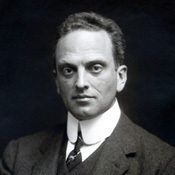
A. Piatt Andrew played a crucial role in the formation of the Federal Reserve System. He was known as a scholar, a soldier and a statesman throughout a varied career that took him from the lecture halls of Harvard University to the battlefields of France and on to the nation’s capital.
Andrew was born in La Porte, Indiana, in 1873, the son of a banker. After graduating from Princeton University in 1893, he traveled to Europe for further study and eventually earned a PhD from Harvard University in 1900.
Following his education, Andrew joined Harvard as an economics instructor and professor, a position he held until 1909. During his time at Harvard, he was widely published in scholarly journals, wrote for newspapers on business and economic topics, and counted a young Franklin Delano Roosevelt among his students.
Following the Panic of 1907, Andrew was tapped by Sen. Nelson Aldrich to work for a newly formed congressional panel charged with studying the causes behind the financial turmoil. Andrew served as an expert and editor for the National Monetary Commission, helping produce the commission’s extensive reports describing the financial system in other countries and the structural problems within the U.S. financial system.
In 1909, Andrew, by now a well-known and recognized expert on financial and banking issues, was appointed by President William Howard Taft to serve as director of the US Mint. He quickly advanced within the Taft administration and was named an assistant secretary of the Treasury Department in 1910.
Later that year, Andrew was one of six men, including Sen. Aldrich, to attend a secret meeting on Jekyll Island Georgia, that was organized under the ruse of a duck hunt. But the group was actually there to develop a plan to restructure the country’s banking system; the plan they developed was the basic foundation for what would eventually be the Federal Reserve System.
After passage of the Federal Reserve Act in 1913, Andrew left the United States and traveled to the front lines in France soon after the outbreak of war in Europe. With other volunteers, he established a battlefield ambulance service funded by donations from his American contacts and others. When the United States entered World War I in 1917, the ambulance corps was attached to the US Army and became known as the American Field Service. Andrew was appointed a major in the Army and was eventually promoted to the rank of lieutenant colonel.
Following the war, Andrew returned to his home in Gloucester, Massachusetts. He was elected to the US House of Representatives as a Republican in 1921, and he would continue to serve his district for fifteen years. While in Congress, he worked to help France resolve its war debts and also sought to repeal prohibition.
Andrew died suddenly in 1936 after a battle with influenza. A bridge named in his honor spans the Annisquam River in Gloucester. (Source: Federal Reserve History)
More:
https://en.wikipedia.org/wiki/A._Piat...
http://www.ourstory.info/library/2-ww...
https://www.geni.com/people/Abram-Pia...
http://bioguide.congress.gov/scripts/...
http://www.oac.cdlib.org/findaid/ark:...
http://in-nomine-patris.wikia.com/wik....
https://vimeo.com/64493557
http://apiattandrewredroof.blogspot.hr/
http://www.irwincollier.com/harvard-m...
http://www.jekyllclub.com/2010/12/par...
http://www.worldcat.org/identities/lc...
http://www.findagrave.com/cgi-bin/fg....
http://www.wrecksite.eu/wreck.aspx?13...
http://query.nytimes.com/gst/abstract...
http://query.nytimes.com/gst/abstract...
http://query.nytimes.com/gst/abstract...
http://query.nytimes.com/gst/abstract...
(no image) The National Cyclopaedia of American Biography, Volume I by James Terry White (no photo)
(no image) History of the American Field Service in France by James William Davenport Seymour (no photo)
 byArlen J. Hansen (no photo)
byArlen J. Hansen (no photo) by George F. Butterick No photo)
by George F. Butterick No photo) by Abram Piatt Andrew (no photo)
by Abram Piatt Andrew (no photo)
 Jekyll Island Club
Jekyll Island Club
Jekyll Island: Old clubhouse, now a hotel
The Jekyll Island Club was a private club on Jekyll Island, on Georgia's Atlantic coast. It was founded in 1886 when members of an incorporated hunting and recreational club purchased the island for $125,000 from John Eugene du Bignon. The original design of the Jekyll Island Clubhouse, with its signature turret, was completed in January 1888. The club thrived through the early 20th century; its members came from many of the world's wealthiest families, most notably the Morgans, Rockefellers, and Vanderbilts. The club closed at the end of the 1942 season due to complications from World War II. In 1947, after five years of funding a staff to keep up the lawn and cottages, the island was purchased from the club's remaining members for $675,000 during condemnation proceedings by the state of Georgia.
The State tried operating the club as a resort, but this was not financially successful and the entire complex was closed by 1971. The complex was designated a historic landmark in 1978.
It was restored and reopened as a luxury resort hotel in 1985. Today, Jekyll Island Club Hotel is a member of Historic Hotels of America, the official program of the National Trust for Historic Preservation. (Source: Wikipedia)
More:
http://www.jekyllislandhistory.com/je...
http://www.exploresouthernhistory.com...
https://www.nps.gov/nr/travel/geo-flo...
http://www.jekyllisland.com/
https://www.geni.com/projects/Jekyll-...
http://www.explorestsimonsisland.com/...
http://www.georgiaencyclopedia.org/ar...
http://www.businessinsider.com/fed-je...
http://www.whale.to/b/m_ch_1.html
http://www.federalreservehistory.org/...
http://www.gatewaytothegoldenisles.co...
https://en.wikipedia.org/wiki/List_of...
https://en.wikipedia.org/wiki/Nationa...
http://npgallery.nps.gov/nrhp/Downloa...
http://www.historichotels.org/hotels-...
http://www.nytimes.com/1994/03/06/mag...
 by Richard Jay Hutto (no photo)
by Richard Jay Hutto (no photo) by Kit Konolige (no photo)
by Kit Konolige (no photo) by William B. McCash (no photo)
by William B. McCash (no photo) by Tyler Bagwell (no photo)
by Tyler Bagwell (no photo) by Tyler E. Bagwell (no photo)
by Tyler E. Bagwell (no photo) by Martha L. Keber (no photo)
by Martha L. Keber (no photo) by June Hall McCash (no photo)
by June Hall McCash (no photo) by
by
 Pamela Bauer Mueller
Pamela Bauer Mueller by
by
 G. Edward Griffin
G. Edward Griffin by
by
 Eustace Mullins
Eustace Mullins
 National Reserve Association
National Reserve Association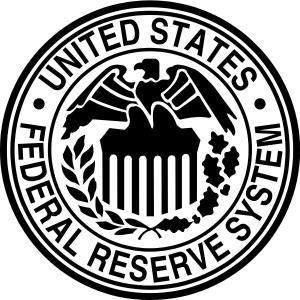
For nearly eighty years, the U.S. was without a central bank after the charter for the Second Bank of the United States was allowed to expire. After various financial panics, particularly a severe one in 1907, some Americans became persuaded that the country needed some sort of banking and currency reform that would, when threatened by financial panics, provide a ready reserve of liquid assets, and furthermore allow for currency and credit to expand and contract seasonally within the U.S. economy.
Some of this was chronicled in the reports of the National Monetary Commission (1909–1912), which was created by the Aldrich–Vreeland Act in 1908. Included in a report of the Commission, submitted to Congress on January 9, 1912, were recommendations and draft legislation with 59 sections, for proposed changes in U.S. banking and currency laws. The proposed legislation was known as the Aldrich Plan, named after the chairman of the Commission, Republican Senator Nelson W. Aldrich of Rhode Island.
The Plan called for the establishment of a National Reserve Association with 15 regional district branches and 46 geographically dispersed directors primarily from the banking profession. The Reserve Association would make emergency loans to member banks, print money, and act as the fiscal agent for the U.S. government. State and nationally chartered banks would have the option of subscribing to specified stock in their local association branch. It is generally believed that the outline of the Plan had been formulated in a secret meeting on Jekyll Island in November 1910, which Aldrich and other well connected financiers attended. (Source: Wikipedia)
More:
https://fraser.stlouisfed.org/docs/hi...
https://www.washingtonpost.com/news/w...
https://en.wikipedia.org/wiki/History...
https://en.wikipedia.org/wiki/Nationa...
http://www.federalreservehistory.org/...
https://www.federalreserve.gov/aboutt...
https://www.federalreserveeducation.o...
http://www.let.rug.nl/usa/essays/gene...
http://www.apfn.org/apfn/reserve.htm
https://archive.org/details/benefitso...
https://archive.org/details/nationalr...
(no image) Banking and currency and the money trust by Charles A. Lindbergh Sr. (no photo)
(no image) Nelson W. Aldrich, A Leader In American Politics by Nathaniel W. Stephenson (no photo)
 by James Livingston (no photo)
by James Livingston (no photo) by Richard T. McCulley (no photo)
by Richard T. McCulley (no photo) by Melanie Ann Apel (no photo)
by Melanie Ann Apel (no photo) by Elmus Wicker (no photo)
by Elmus Wicker (no photo) by
by
 Eustace Mullins
Eustace Mullins
 James Edgar Martine
James Edgar Martine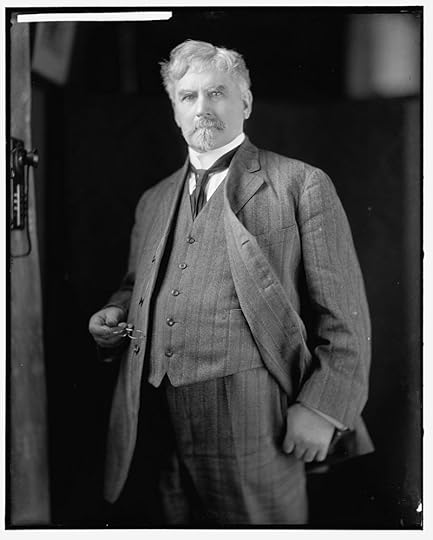
James Edgar Martine (August 25, 1850 – February 26, 1925) was an American Democratic Party politician who served as United States Senator from New Jersey.
He was born in New York City on August 25, 1850. He moved with his parents to Plainfield, New Jersey in 1857; attended the public schools; engaged in agricultural pursuits, the real estate business, and in building; member of the Plainfield common council; unsuccessful candidate for election as Mayor of Plainfield, New Jersey; unsuccessful candidate in 1906 for election to the Sixtieth United States Congress. He was elected as a Democrat to the United States Senate and served from March 4, 1911, to March 4, 1917, where he served as chairman of the Committee on Coast Defenses (Sixty-third United States Congress), Committee on Industrial Expositions (Sixty-third and Sixty-fourth United States Congresses); unsuccessful candidate for reelection in 1916; resumed agricultural pursuits; died in Miami, Florida; interment in Hillside Cemetery located in Scotch Plains, New Jersey.
During the 1913 Senate Committee investigation into the West Virginia miners strike Senator Martine aggressively confronted Kanawha County coal company executive Quinn Morton for arming and directing the use of the armored "Bull Moose"train against a Holly Grove tent village of miners and their families in the middle of the night on February 2, 1913 during which Charles Estep, young miner with a young child and a pregnant wife, was killed. The train contained dozens of private mercenaries armed with a Gatling gun. Martine confronted Morton over his refusal to acknowledge giving the command to fire and then reportedly asking the sheriff to back the train up and do it again. The two other senators on the committee attempted to censor Martine by requiring that his questions be submitted for prior review.
He died on February 26, 1925 in Miami, Florida of apoplexy. (Source: Wikipedia)
More:
http://bioguide.congress.gov/scripts/...
http://politicalgraveyard.com/bio/mar...
http://query.nytimes.com/gst/abstract...
https://news.google.com/newspapers?ni...
http://prabook.org/web/person-view.ht...
http://digitalcollections.nypl.org/it...
https://commons.wikimedia.org/wiki/Fi...
https://www.geni.com/people/James-Edg...
http://www.findagrave.com/cgi-bin/fg....
https://www.amazon.com/Photo-Martine-...
(no image) The Eight-Hour Day: Various Articles, Arguments, and Bills Relating to the Eight-Hour Law by Anonymous (no photo)
(no image) New Jersey Biographical Dictionary by Jan Onofrio (no photo)
 by Simon Cordery (no photo)
by Simon Cordery (no photo) by Edwin A. Weinstein (no photo)
by Edwin A. Weinstein (no photo) by CQ Press Editors (no photo)
by CQ Press Editors (no photo)
 Miles Poindexter
Miles Poindexter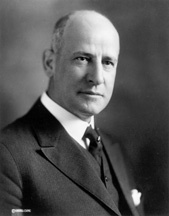
POINDEXTER, Miles, a Representative and a Senator from Washington; born in Memphis, Tenn., April 22, 1868; attended the Fancy Hill Academy, Rockbridge County, Va., and Washington and Lee University, Lexington, Va., graduating in law from that university in 1891; settled in Walla Walla, Wash., in 1891; admitted to the bar and began the practice of law; prosecuting attorney of Walla Walla County in 1892; moved to Spokane, Wash., in 1897 and continued the practice of law; assistant prosecuting attorney for Spokane County 1898-1904; judge of the superior court 1904-1908; elected as a Republican to the Sixty-first Congress (March 4, 1909-March 3, 1911); elected to the United States Senate in 1910; reelected in 1916 and served from March 4, 1911, to March 3, 1923; unsuccessful candidate for reelection in 1922; chairman, Committee on Expenditures in the Interior Department (Sixty-second Congress), Committee on Mines and Mining (Sixty-second, Sixty-sixth and Sixty-seventh Congresses), Committee on Pacific Islands and Puerto Rico (Sixty-second Congress), Committee on Expenditures in the War Department (Sixty-third and Sixty-fourth Congresses), Committee on Indian Depredations (Sixty-fifth Congress); appointed by President Warren Harding as Ambassador to Peru 1923-1928; unsuccessful candidate for the United States Senate in 1928; returned to his home, ‘Elk Cliff,’ Greenlee, Rockbridge County, Va., where he died September 21, 1946; interment in the Presbyterian Cemetery, Lexington, Va.
(Source: Biographical Directory of the United States Congress)
More:
https://en.wikipedia.org/wiki/Miles_P...
http://history.house.gov/People/Listi...
https://www.govtrack.us/congress/memb...
https://ballotpedia.org/Miles_Poindexter
http://archiveswest.orbiscascade.org/...
http://cdm16786.contentdm.oclc.org/cd...
http://cdm16786.contentdm.oclc.org/cd...
https://fraser.stlouisfed.org/docs/hi...
https://history.state.gov/departmenth...
http://www.nndb.com/people/075/000063...
http://digitalcollections.lib.washing...
http://digitalcollections.lib.washing...
http://digitum.washingtonhistory.org/...
http://www.theodorerooseveltcenter.or...
http://www.jstor.org/stable/40487883?...
(no image) The proposed League of Nations by Miles Poindexter (no photo)
(no image) The Dry Years: Prohibition and Social Change in Washington by Norman H Clark (no photo)
 by James Holt (no photo)
by James Holt (no photo) by Kristofer Allerfeldt (no photo)
by Kristofer Allerfeldt (no photo) by William R. Walker (no photo)
by William R. Walker (no photo) by Regin Schmidt (no photo)
by Regin Schmidt (no photo) by Howard W. Allen (no photo)
by Howard W. Allen (no photo) by Jo Anne McCormick Quatannens (no photo)
by Jo Anne McCormick Quatannens (no photo)
 The Outlook
The Outlook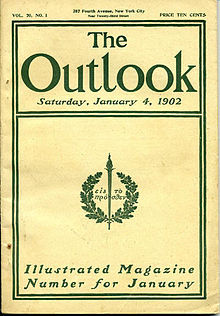
Cover of The Outlook, 4 January 1902
The Outlook (1870–1935) was a weekly magazine, published in New York City.
In 1900, the ranking weekly magazines of news and opinion were The Independent (1870), The Nation (1865), the Outlook (1870), and in a different class or with a different emphasis, The Literary Digest (1890). The Digest was a summary of leading articles and editorials from other magazines and newspaper.
In 1928 The Independent was merged with The Outlook to form The Outlook and Independent.
Notable contributors
Theodore Roosevelt - associate editor for The Outlook
Edwin Arlington Robinson
Booker T. Washington - published autobiographical pieces in The Outlook in 1900. These pieces were collected in book form and published in 1901 as Up from Slavery.
Alfred Emanuel Smith, Francis Rufus Bellamy, and Harold Trowbridge Pulsifer - editors.
Oscar Cesare - editorial cartoonist for the magazine.
Benjamin Kidd’s interview article, “Future of the United States” (September 1, 1894) made him a celebrity in the United States. (Source: Wikipedia)
More:
https://books.google.hr/books?id=V8cx...
http://www.unz.org/Pub/Outlook
http://www.bartleby.com/273/1003.html
https://www.unz.org/Pub/Outlook-1894s...
http://www.abaa.org/book/738538452
http://www.theodorerooseveltbooks.com...
http://hiddenheritagecollections.org/...
http://www.papergreat.com/2011/05/mor...
http://lists.project-wombat.org/piper...
https://books.bibliopolis.com/main/fi...
https://books.bibliopolis.com/main/fi...
http://jwa.org/thisweek/apr/15/1911/f...
http://jwa.org/media/factory-girls-da...
http://www.worldlibrary.org/articles/...
http://franklinbookstore.com/Title/O/...
http://en.metapedia.org/wiki/The_Outl...
(no image) A History of American Magazines, Vol. 1: 1741-1850 by Frank Luther Mott (no photo)
(no image) American Profile, 1900-1909 by Edward Wagenknecht (no photo)
(no image) Anthology of magazine verse for 1920 by William Braithwaite (no photo)
 by Hazel Dicken-Garcia (no photo)
by Hazel Dicken-Garcia (no photo) by John Hall Wheelock (no photo)
by John Hall Wheelock (no photo) by
by
 Booker T. Washington
Booker T. Washington by
by
 Theodore Roosevelt
Theodore Roosevelt by
by
 H.P. Lovecraft
H.P. Lovecraft
 National Progressive Republican League
National Progressive Republican League
Robert M. La Follette
Republican insurgents dissatisfied with the conservative administration of President William Howard Taft formed (Jan., 1911) the National Progressive Republican League. Senator Robert M. La Follette was their choice for the Republican presidential nomination in 1912 until former President Theodore Roosevelt, at odds with his old friend Taft for various personal and political reasons, threw his "hat into the ring" (Feb. 24, 1912). The regular Republicans, however, controlled the national convention at Chicago (June) and renominated Taft, whereupon the Roosevelt supporters organized the new Progressive party (the Bull Moose party) and nominated, also at Chicago (August), Roosevelt for President and Hiram W. Johnson for Vice President.
(Source: Infoplease.com)
More:
https://www.apstudynotes.org/us-histo...
https://news.google.com/newspapers?ni...
https://news.google.com/newspapers?ni...
http://www.theodorerooseveltcenter.or...
http://www.apnotes.net/notes-15e/ch28...
http://www.infoplease.com/encyclopedi...
https://valkayec.files.wordpress.com/...
http://www.myteacherpages.com/webpage...
http://www.theglobalist.com/where-hav...
https://www.researchgate.net/publicat...
http://legal-dictionary.thefreedictio...
http://www.encyclopedia.com/topic/Pro...
http://journals.cambridge.org/action/...
https://prezi.com/r8v8y7y1dw0e/in-191...
http://search.opinionarchives.com/TP_...
http://www.course-notes.org/US_Histor...
http://findingaids.loc.gov/db/search/...
https://www.coursehero.com/file/plfn8...
(no image) Progressivism by Reyna Eisenstark (no photo)
 by David A. Horowitz (no photo)
by David A. Horowitz (no photo) by Eldon J. Eisenach (no photo)
by Eldon J. Eisenach (no photo) by Robert Harrison (no photo)
by Robert Harrison (no photo) by Kenneth E. Miller (no photo)
by Kenneth E. Miller (no photo) by Jo Freeman (no photo)
by Jo Freeman (no photo) by Hilarie Staton (no photo)
by Hilarie Staton (no photo) by John A. Thompson (no photo)
by John A. Thompson (no photo) by Robert Marion La Follette (no photo)
by Robert Marion La Follette (no photo)
 Sherman Antitrust Act
Sherman Antitrust Act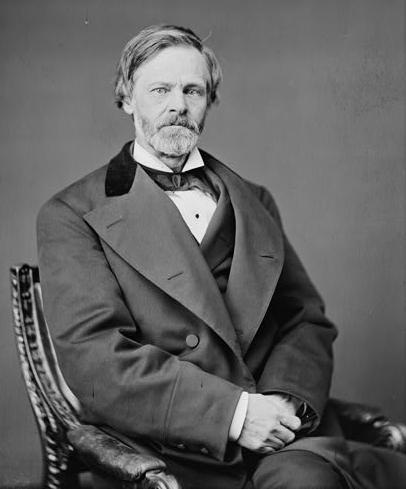
Sen. John Sherman
The Sherman Antitrust Act (Sherman Act, 26 Stat. 209, 15 U.S.C. §§ 1–7) is a landmark federal statute in the history of United States antitrust law (or "competition law") passed by Congress in 1890. Passed under the presidency of Benjamin Harrison, it prohibits certain business activities that federal government regulators deem to be anti-competitive, and requires the federal government to investigate and pursue trusts.
In the general sense, a trust is a centuries-old form of a contract whereby one party entrusts its property to a second party. These are commonly used to hold inheritances for the benefit of children, for example. The specific sense from 19th Century America used in the law refers to a type of trust which combines several large businesses for monopolistic purposes - to exert complete control over a market - though the law addresses monopolistic practices even if they have nothing to do with this specific legal arrangement. In most countries outside the United States, antitrust law is known as "competition law."
The law attempts to prevent the artificial raising of prices by restriction of trade or supply. "Innocent monopoly", or monopoly achieved solely by merit, is perfectly legal, but acts by a monopolist to artificially preserve that status, or nefarious dealings to create a monopoly, are not. The purpose of the Sherman Act is not to protect competitors from harm from legitimately successful businesses, nor to prevent businesses from gaining honest profits from consumers, but rather to preserve a competitive marketplace to protect consumers from abuses. (European competition law extends beyond this, to the protection of competitors, at the expense of consumers and overall efficiency.)
Over time, the Act has also been used more broadly, to oppose the combination of entities that could potentially harm competition, such as monopolies or cartels.
(Source: Wikipedia)
More:
https://www.ourdocuments.gov/doc.php?...
http://www.infoplease.com/encyclopedi...
http://www.britannica.com/event/Sherm...
https://www.ftc.gov/tips-advice/compe...
http://www.encyclopedia.com/topic/She...
https://www.law.cornell.edu/wex/sherm...
http://www.linfo.org/sherman.html
http://www.u-s-history.com/pages/h760...
http://business-law.freeadvice.com/bu...
http://www.theodorerooseveltcenter.or...
http://www.dictionary.com/browse/sher...
http://legal-dictionary.thefreedictio...
http://economics.fundamentalfinance.c...
http://www.micheloud.com/fxm/so/antit...
https://www.youtube.com/watch?v=_DSN0...
http://www.quebecoislibre.org/000219-...
http://object.cato.org/sites/cato.org...
 by Katalin Judit Cseres (no photo)
by Katalin Judit Cseres (no photo) by Keith N. Hylton (no photo)
by Keith N. Hylton (no photo) by Richard A. Mann (no photo)
by Richard A. Mann (no photo) by
by
 Richard A. Posner
Richard A. Posner by
by
 Robert H. Bork
Robert H. Bork
 Senator William Lorimer - the “Blonde Boss of Chicago”
Senator William Lorimer - the “Blonde Boss of Chicago”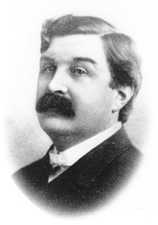
LORIMER, William, a Representative and a Senator from Illinois; born in Manchester, England, April 27, 1861; immigrated to the United States in 1866 with his parents, who settled in Michigan; moved to Chicago, Ill., in 1870; self-educated; apprenticed to the trade of sign painter at the age of ten; worked in the packing houses and for a street railroad company; ward boss and constable 1886; engaged in the real estate business and later as a builder and brick manufacturer; elected as a Republican to the Fifty-fourth, Fifty-fifth, and Fifty-sixth Congresses (March 4, 1895-March 3, 1901); unsuccessful candidate for reelection in 1900 to the Fifty-seventh Congress; elected to the Fifty-eighth and to the three succeeding Congresses and served from March 4, 1903, until his resignation, effective June 17, 1909, having been elected Senator; chairman, Committee on Expenditures in the Department of the Navy (Sixty-first Congress), Committee on Mines and Mining (Sixty-second Congress), Committee on Pacific Islands and Puerto Rico (Sixty-second Congress); presented credentials as a Senator-elect to the United States Senate for the term that had commenced March 4, 1909, and served from June 18, 1909, until July 13, 1912, when, after a Senate investigation and acrimonious debate, the Senate adopted a resolution declaring “that corrupt methods and practices were employed in his election, and that the election, therefore, was invalid”; resumed his former pursuits and was president of La Salle Street Trust & Savings Bank 1910-1915; subsequently engaged in the lumber business; died in Chicago, Ill., September 13, 1934; interment in Calvary Cemetery. (Source: Biographical Directory of the U.S. Congress)
More:
https://en.wikipedia.org/wiki/William...
http://www.nbcchicago.com/blogs/ward-...
https://www.govtrack.us/congress/memb...
http://downfalldictionary.blogspot.hr...
http://articles.chicagotribune.com/20...
https://www.loc.gov/item/acd199600340...
http://www.nwherald.com/2013/05/21/wi...
http://www.huffingtonpost.com/robert-...
http://www.cl-hs.org/resources/Lorime...
https://graveyards.com/IL/Cook/calvar...
(no image) STUDY IN BOSS POLITICS by J.A. Tarr (no photo)
(no image) The Laws of Wisconsin by Wisconsin (no photo)
(no image) Election of William Lorimer by United States Congress Senate Select C (no photo)
 by Kenneth C. Martis (no photo)
by Kenneth C. Martis (no photo) by Richard Baker (no photo)
by Richard Baker (no photo) by Ralph A. Rossum (no photo)
by Ralph A. Rossum (no photo) Raymond B. Vickers (no photo)
Raymond B. Vickers (no photo) by
by
 U.S. Congress
U.S. Congress by
by
 Louis D. Brandeis
Louis D. Brandeis
 Charles August Lindbergh Sr.
Charles August Lindbergh Sr.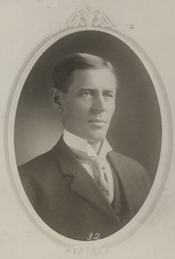
LINDBERGH, Charles August, a Representative from Minnesota; born in Stockholm, Sweden, January 20, 1859; immigrated to the United States in 1860 with his parents, who settled on a farm near Melrose, Stearns County, Minn.; attended the common schools, Grove Lake (Minn.) Academy, and the St. Cloud (Minn.) Normal School; was graduated from the law department of the University of Michigan at Ann Arbor in 1883; was admitted to the bar the same year and commenced practice in Little Falls, Minn.; also engaged in agricultural pursuits; prosecuting attorney of Morrison County 1891-1893; elected as a Republican to the Sixtieth and to the four succeeding Congresses (March 4, 1907-March 3, 1917); did not seek renomination in 1916, but was an unsuccessful candidate for election to the United States Senate on the Non-Partisan League ticket; resumed the practice of law; unsuccessful candidate for Governor of Minnesota as a Progressive Republican, with Non-Partisan League endorsement, in 1918; was a candidate for the nomination for Governor on the Farmer-Labor ticket in 1924, but his death occurred before the primary election was held; died in Crookston, Minn., May 24, 1924; remains were cremated and the ashes deposited in the columbarium in Lakewood Cemetery, Minneapolis, Minn. (Source: United States House of Representatives)
More:
https://www.geni.com/people/Charles-A...
http://www.thirdworldtraveler.com/Ban...
http://forum.prisonplanet.com/index.p...
http://www.apfn.org/apfn/reserve2.htm
http://americanbuilt.us/patriots/char...
http://www.bushstole04.com/monetarysy...
http://collections.mnhs.org/mnhistory...
https://www.nps.gov/nhl/find/statelis...
http://bioguide.congress.gov/scripts/...
https://criminalbankingmonopoly.wordp...
https://en.wikipedia.org/wiki/Charles...
http://www.barefootsworld.net/banking...
http://quotes.liberty-tree.ca/quotes_....
http://www.henrymakow.com/the_other_c...
http://www.nytimes.com/2013/06/23/bus...
http://www.ourrepubliconline.com/Auth...
http://www.washingtonsblog.com/2012/0...
https://www.youtube.com/watch?v=EjdMH...
http://www2.mnhs.org/library/findaids...
http://publiccentralbank.com/
https://www.scribd.com/doc/21176029/C...
(no image) Lindbergh Of Minnesota; A Political Biography by Bruce L. Larson (no photo)
(no image) Charles August Lindbergh, Sr: A case study of congressional insurgency, 1906-1912 by Richard B. Lucas (no photo)
(no image) Banking and currency and the money trust by Charles A. Lindbergh Sr. (no photo)
 by Charles A. Lindbergh Sr. (no photo)
by Charles A. Lindbergh Sr. (no photo) by Charles A. Lindbergh Sr. (no photo)
by Charles A. Lindbergh Sr. (no photo) by Susan Hertog (no photo)
by Susan Hertog (no photo) by
by
 Eric Dregni
Eric Dregni by
by
 Deanna Spingola
Deanna Spingola by
by
 Charles A. Lindbergh
Charles A. Lindbergh
 Hiram Warren Johnson
Hiram Warren Johnson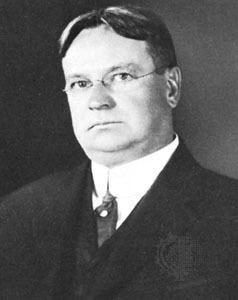
Hiram Johnson, (born Sept. 2, 1866, Sacramento, Calif., U.S.—died Aug. 6, 1945, Bethesda, Md.),reform governor of California (1911–17) and a U.S. senator for 28 years (1917–45), a Progressive Republican and later a staunch isolationist.
Winning acclaim in 1906 as a crusading San Francisco prosecuting attorney, Johnson was elected governor four years later on a reform ticket. Under his leadership the legislature curtailed the political hold on California of the Southern Pacific Railroad and placed the state in the forefront of the Progressive movement.
In 1912 Johnson helped form the Progressive Party and was its unsuccessful vice-presidential candidate on a ticket with Theodore Roosevelt. In the Senate he opposed the dominant conservative tendencies of the Republican Party, supporting ameliorative farm legislation and, in the 1930s, New Deal measures to relieve unemployment. Gradually he became best known for his implacable isolationism, opposing U.S. adherence to the Treaty of Versailles, the League of Nations, and the Permanent Court of International Justice, known as the World Court. He sponsored the Neutrality acts of the 1930s and resisted all preparedness measures before World War II as well as the formation of the United Nations. (Source: Encyclopædia Britannica)
More:
http://picturethis.museumca.org/timel...
http://factcards.califa.org/gov/hwjoh...
http://www.jstor.org/stable/41170813?...
https://www.youtube.com/watch?v=3egN-...
https://en.wikipedia.org/wiki/Hiram_J...
http://governors.library.ca.gov/23-hj...
http://www.californiamuseum.org/induc...
http://www.nga.org/cms/home/governors...
http://www.u-s-history.com/pages/h198...
http://biography.yourdictionary.com/h...
http://articles.latimes.com/2010/sep/...
http://bioguide.congress.gov/scripts/...
https://www.geni.com/people/Hiram-W-J...
http://www.sfgate.com/opinion/article...
https://www.youtube.com/watch?v=zaVfh...
https://archive.org/stream/independen...
http://www.jstor.org/stable/3635096?s...
http://www.jstor.org/stable/3636266?s...
http://www.jstor.org/stable/25154142?...
http://www.tandfonline.com/doi/abs/10...
(no image) Twilight of Progressivism: The Western Republican Senators and the New Deal by Ronald L. Feinman (no photo)
(no image) Californias Prodigal Sons: Hiram Johnson and the Progressives, 1911-17 by Spencer C. Olin (no photo)
(no image) Hiram Johnson: A Bio-Bibliography by Michael Weatherson (no photo)
 by Brian P. Janiskee (no photo)
by Brian P. Janiskee (no photo) by Richard Lower (no photo)
by Richard Lower (no photo) by Karen A.J. Miller (no photo)
by Karen A.J. Miller (no photo) by Michael Weatherson (no photo)
by Michael Weatherson (no photo)
 Governor Walter Roscoe Stubbs
Governor Walter Roscoe Stubbs
Walter Roscoe Stubbs, the eighteenth governor of Kansas, was born near Richmond, Indiana on November 7, 1858. His early education was attained in the Kansas public school system. He also attended Kansas University, but did not graduate. He then went on to establish very lucrative businesses in the contracting and banking industries.
Stubbs entered politics in 1902, serving as a member of the Kansas House of Representatives, a position he held for five years. He also served as speaker in his second legislative term, and was chairman of the Republican State Central Committee from 1904 to 1908.
Stubbs won the 1908 Republican gubernatorial nomination, and was sworn into the governorship on January 11, 1909, becoming the first governor nominated by the newly passed direct primary law. Stubbs was reelected to a second term in 1910. During his tenure, a public utilities commission was authorized; policies of state charities were improved, and restrictions were tighten on insurance companies. Also, railroad rates were controlled, farm organizations were established, and a campaign expense law and a bank guarantee law were sanctioned.
Stubbs did not seek a third term, but instead ran for election to the U.S. Senate. He won the primary in 1912, but was defeated in the general election. He also was unsuccessful in his 1918 senatorial bid, as well as his 1922 and 1924 gubernatorial bids.
After suffering from heart problems, Governor Walter R. Stubbs passed away on March 25, 1929. He was buried at the Lawrence Cemetery in Lawrence, Kansas.
(Source: National Governors Association)
More:
https://en.wikipedia.org/wiki/Walter_...
https://www.kshs.org/kansapedia/walte...
http://futurethought.pbworks.com/f/WR...
http://www.eliteparanormalkc.com/foru...
http://www.lawrence.com/news/2003/oct...
http://www.kansasmemory.org/item/214611
http://www.ksgenweb.com/archives/1918...
http://query.nytimes.com/gst/abstract...
https://beta.worldcat.org/archivegrid...
http://www.worldcat.org/identities/lc...
https://kslib.info/DocumentCenter/Vie...
https://kslib.info/DocumentCenter/Vie...
https://www.ku.edu/about/alumni/
http://www2.ljworld.com/news/2009/jul...
http://wc.rootsweb.ancestry.com/cgi-b...
http://kuhistory.com/articles/abbey-m...
http://www.kshs.org/p/voting-in-kansa...
http://www.findagrave.com/cgi-bin/fg....
http://www.kspatriot.org/index.php/go...
(no image) Biennial Report of the Secretary of State by Kansas Secretary of State (no photo)
(no image) Kansas Journey, The by Jennie Chinn (no photo)
Biographical Directory of the Governors of the United States, 1789-1978 by Robert Sobel (no photo)
 by Anne M. Butler (no photo)
by Anne M. Butler (no photo) by William Elsey Connelley (no photo)
by William Elsey Connelley (no photo) by Capace, Nancy (no photo)
by Capace, Nancy (no photo) by Jan Onofrio (no photo)
by Jan Onofrio (no photo) by Thomas E. Spencer (no photo)
by Thomas E. Spencer (no photo) by Patricia E Ackerman (no photo)
by Patricia E Ackerman (no photo) by
by
 Ethan G. Sribnick
Ethan G. Sribnick by Walter Roscoe Stubbs (no photo)
by Walter Roscoe Stubbs (no photo)
 George Walbridge Perkins
George Walbridge Perkins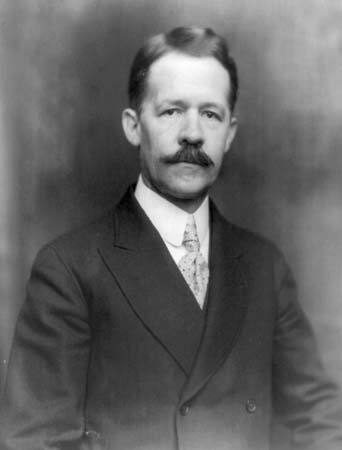
George Walbridge Perkins, (born Jan. 31, 1862, Chicago—died June 18, 1920, Stamford, Conn., U.S.)
U.S. insurance executive and financier who organized the health insurance agency system and the corporate structures of several large companies. He also served as chairman of Theodore Roosevelt’s Progressive Party, organizing Roosevelt’s 1912 presidential campaign.
When Perkins became an office boy for the New York Life Insurance Company in 1877, the company gave charge of territories to general agents who then hired their own salesmen. The salesmen had no company loyalty and often made exaggerated claims for a policy to get the premium. By 1892 Perkins was third vice president in charge of all agencies. Instead of contracting with general agents, he hired local salesmen directly and made them permanent employees. In 1896 he developed a new system of employee benefits based on number of years on the job and policies sold.
In 1900 Perkins was chairman of the Palisades Interstate Park Commission. The following year he became a partner in the banking firm of J.P. Morgan & Company, in which capacity he reorganized corporations such as International Harvester, International Mercantile Marine, and United States Steel. He set up plans for employees to purchase stock at less than market value and established sick pay and old-age pensions. In 1910 he retired from business to promote his views about the need for cooperation in business. His published speeches include National Action and Industrial Growth (1914), The Sherman Law (1915), and Profit Sharing (1919).
(Source: Encyclopedia Britannica)
More:
https://en.wikipedia.org/wiki/George_...
http://biography.yourdictionary.com/g...
http://www.columbia.edu/cu/lweb/archi...
http://www.conservapedia.com/George_W...
http://query.nytimes.com/gst/abstract...
http://query.nytimes.com/gst/abstract...
http://wvvw.thebhc.org/sites/default/...
https://prezi.com/5lvhkgalitks/the-st...
http://pudl.princeton.edu/objects/736...
https://www.wavehill.org/about/history/
https://beta.worldcat.org/archivegrid...
http://news.hrvh.org/veridian/cgi-bin...-------
http://news.hrvh.org/veridian/cgi-bin...
http://reformed-theology.org/html/boo...
http://www.nber.org/chapters/c7182.pdf
http://query.nytimes.com/mem/archive-...
http://query.nytimes.com/mem/archive-...
http://query.nytimes.com/gst/abstract...
(no image) Right-Hand Man: The Life of George W. Perkins by John A. Garraty (no photo)
 by Gabriel Kolko (no photo)
by Gabriel Kolko (no photo) by Paul Ryscavage (no photo)
by Paul Ryscavage (no photo) by Robert Binnewies (no photo)
by Robert Binnewies (no photo) by Melvyn Dubofsky (no photo)
by Melvyn Dubofsky (no photo) by Samuel Gompers (no photo)
by Samuel Gompers (no photo) by Philip Shriver Klein (no photo)
by Philip Shriver Klein (no photo) by Vincent Carosso (no photo)
by Vincent Carosso (no photo) by Theresa M. Collins (no photo)
by Theresa M. Collins (no photo) by
by
 Charles D. Ellis
Charles D. Ellis
 Frank Andrew Munsey
Frank Andrew Munsey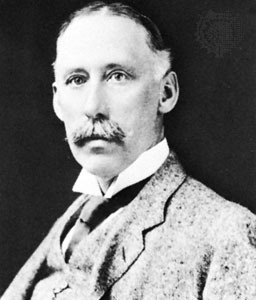
Frank Andrew Munsey, (born Aug. 21, 1854, Mercer, Maine, U.S.—died Dec. 22, 1925, New York City)
Newspaper and magazine publisher, a dominant figure in the trend toward journalistic consolidation in the United States. Viewing his publications purely as moneymaking enterprises, Munsey administered them in detail, maintained an inoffensive and colourless editorial policy, and acquired numerous papers in order to suppress them in favour of stronger competitors also owned by him.
After managing a telegraph office in Augusta, Maine, he went to New York City in 1882 and immediately founded the Golden Argosy, a magazine for children. Six years later it was renamed the Argosy Magazine and converted into an adult magazine. Munsey’s Magazine (founded 1889; called Munsey’s Weekly until 1891) was the first cheap (originally ten cents a copy) general-circulation, illustrated magazine in the United States. His most important newspaper purchases were the Baltimore News (1908) and several papers in New York City: the Star (1891), the Press (1912), The Sun and the Evening Sun (1916), the Herald and its associate, the Evening Telegram (1920), and The Globe (1924). Between 1916 and 1924 some of these papers disappeared in a series of profitable mergers. On his death most of his fortune (estimated at $20,000,000) went to the Metropolitan Museum of Art, New York City. (Source: Encyclopedia Britannica)
More:
http://uwf.edu/dearle/enewsstand/enew...
https://news.google.com/newspapers?ni...
http://themunseyapts.com/the-munsey-p...
https://en.wikipedia.org/wiki/Frank_M...
http://www.encyclopedia.com/topic/Fra...
http://www.bookrags.com/biography/fra...
http://www.pulpmags.org/database_page...
http://www.pulpworld.com/biography/fr...
http://dlib.nyu.edu/findingaids/html/...
http://argonotes.blogspot.hr/2011/02/...
http://www.hbs.edu/leadership/20th-ce...
(no image) Forty Years--Forty Millions: The Career of Frank A. Munsey by George Britt (no photo)
 by Frank Luther Mott (no photo)
by Frank Luther Mott (no photo) by St. James Press (no photo)
by St. James Press (no photo) by Library of Congress Copyright Office (no photo)
by Library of Congress Copyright Office (no photo) by Anthony R. Fellow (no photo)
by Anthony R. Fellow (no photo) by Dennis F. Herrick (no photo)
by Dennis F. Herrick (no photo) by Frank Andrew Munsey (no photo)
by Frank Andrew Munsey (no photo) by Frank Andrew Munsey (no photo)
by Frank Andrew Munsey (no photo) by Frank Andrew Munsey (no photo)
by Frank Andrew Munsey (no photo) by
by
 John DeFerrari
John DeFerrari
 Archie Butt
Archie Butt
Archibald Willingham DeGraffenreid Clarendon Butt (September 26, 1865 – April 15, 1912) was an American journalist and United States Army officer.
After a short career as a newspaper reporter, he served two years as the First Secretary of the American embassy in Mexico. He was commissioned in the United States Volunteers in 1898 and served in the Quartermaster Corps during the Spanish-American War.
He gained notice for his work in logistics and animal husbandry, and received a commission in the regular United States Army in 1901. After brief postings in Washington, D.C., and Cuba, he was appointed military aide to Presidents Theodore Roosevelt and William Howard Taft.
He died in the sinking of the RMS Titanic. (Source: Wikipedia)
More:
http://www.biography.com/people/major...
https://www.encyclopedia-titanica.org...
http://www.georgiaencyclopedia.org/ar...
http://historybecauseitshere.weebly.c...
http://www.shapell.org/manuscript/pre...
http://ghostsofdc.org/2012/04/10/arch...
https://www.geni.com/people/Archibald...
http://taoot.wikia.com/wiki/Archibald...
https://uncomelyandbroken.wordpress.c...
http://www.titanicberg.com/Major_Arch...
http://www.pocketwatchconspiracy.com/...
https://www.questia.com/library/16307...
http://www.huffingtonpost.com/2012/04...
https://findingaids.library.emory.edu...
https://www.nps.gov/whho/learn/histor...
http://www.apneos.com/anecbutt.html
http://chroniclingamerica.loc.gov/lcc...
 by Archibald Willingham Butt (no photo)
by Archibald Willingham Butt (no photo) by Major Archibald W. Butt (no photo)
by Major Archibald W. Butt (no photo) by John Sayle Watterson (no photo)
by John Sayle Watterson (no photo) by Michael L. Bromley (no photo)
by Michael L. Bromley (no photo) by Hugh Brewster (no photo)
by Hugh Brewster (no photo) by Archibald Willingham Butt (no photo)
by Archibald Willingham Butt (no photo)
 R.M.S. Titanic
R.M.S. Titanic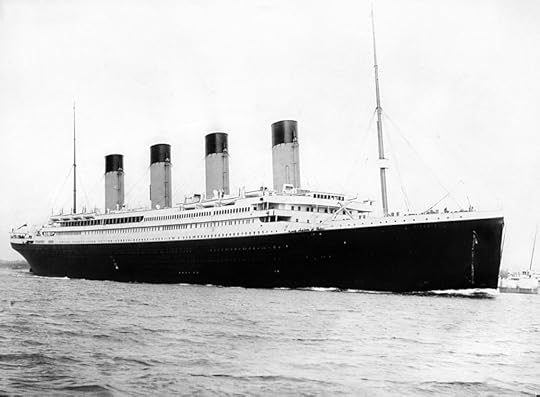
RMS Titanic was a British passenger liner that sank in the North Atlantic Ocean in the early morning of 15 April 1912, after colliding with an iceberg during her maiden voyage from Southampton to New York City. Of the 2,224 passengers and crew aboard, more than 1,500 died in the sinking, making it one of the deadliest commercial peacetime maritime disasters in modern history. The largest ship afloat at the time it entered service, the RMS Titanic was the second of three Olympic class ocean liners operated by the White Star Line, and was built by the Harland and Wolff shipyard in Belfast. Thomas Andrews, her architect, died in the disaster. (Source: Wikipedia)
More:
http://www.titanicfacts.net/
http://www.premierexhibitions.com/cor...
https://www.encyclopedia-titanica.org/
http://www.eyewitnesstohistory.com/ti...
http://www.telegraph.co.uk/travel/lis...
http://www.dailymail.co.uk/travel/tra...
http://www.titanicstory.com/
https://en.wikipedia.org/wiki/Sinking...
http://www.history.com/topics/titanic
https://www.youtube.com/watch?v=8wTlu...
 by Rebecca Aldridge (no photo)
by Rebecca Aldridge (no photo) by Stephanie Barczewski (no photo)
by Stephanie Barczewski (no photo) by Nick Barratt (no photo)
by Nick Barratt (no photo) by W.B. Bartlett (no photo)
by W.B. Bartlett (no photo) by Bruce Beveridge (no photo)
by Bruce Beveridge (no photo) by
by
 Robert D. Ballard
Robert D. Ballard
 Oscar Wilder Underwood
Oscar Wilder Underwood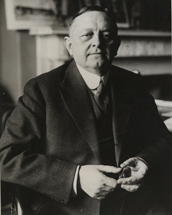
UNDERWOOD, Oscar Wilder, (grandson of Joseph Rogers Underwood), a Representative and a Senator from Alabama; born in Louisville, Jefferson County, Ky., May 6, 1862; attended the common schools, the Rugby School, Louisville, Ky., and the University of Virginia at Charlottesville; studied law; admitted to the bar in 1884 and commenced practice in Birmingham, Ala.; presented credentials as a Democratic Member-elect to the Fifty-fourth Congress and served from March 4, 1895, to June 9, 1896, when he was succeeded by Truman H. Aldrich, who contested his election; elected as a Democrat to the Fifty-fifth and to the eight succeeding Congresses (March 4, 1897-March 3, 1915); did not seek renomination in 1914, having become a candidate for Senator; minority whip (Fifty-sixth Congress); majority leader 1911-1915; chairman, Committee on Ways and Means (Sixty-second and Sixty-third Congresses); unsuccessful candidate for the Democratic presidential nomination in 1912 and 1924; elected as a Democrat to the United States Senate in 1914; reelected in 1920, and served from March 4, 1915, to March 3, 1927; declined to be a candidate for reelection in 1926; minority leader 1920-1923; chairman, Committee on Cuban Relations (Sixty-fourth and Sixty-fifth Congresses); represented the United States as a member of the Conference on Limitation of Armament in 1921 and 1922; represented the United States as a delegate to the Sixth International Conference of American States at Havana, Cuba, in 1928; retired to his estate, ‘Woodlawn Mansion,’ near Accotink, Fairfax County, Va., and engaged in literary pursuits until his death there on January 25, 1929; interment in Woodlawn Cemetery, Birmingham, Ala. (Source: Biographical Directory of the U.S. Congress)
More:
https://en.wikipedia.org/wiki/Oscar_U...
http://www.encyclopediaofalabama.org/...
http://history.house.gov/People/Detai...
https://www.govtrack.us/congress/memb...
https://www.geni.com/people/Oscar-Und...
http://www.bhamwiki.com/w/Oscar_Under...
http://www.imdb.com/title/tt0679743/
http://www.senate.gov/artandhistory/h...
https://ehistory.osu.edu/exhibitions/...
http://www.lib.ua.edu/Alabama_Authors...
http://www.britannica.com/biography/O...
http://cdnc.ucr.edu/cgi-bin/cdnc?a=d&...
(no image) The United States Congress in a Nation Transformed, 1896-1963 by Joel H. Silbey (no photo)
 by Robert E. Dewhirst (no photo)
by Robert E. Dewhirst (no photo) by Davis Rich Dewey (no photo)
by Davis Rich Dewey (no photo) by Glenn Feldman (no photo)
by Glenn Feldman (no photo) by Alfred E. Eckes Jr. (no photo)
by Alfred E. Eckes Jr. (no photo) by Roger H. Davidson (no photo)
by Roger H. Davidson (no photo) by Evans C. Johnson (no photo)
by Evans C. Johnson (no photo) by
by
 Chuck McCutcheon
Chuck McCutcheon
 Governor Judson Harmon of Ohio
Governor Judson Harmon of Ohio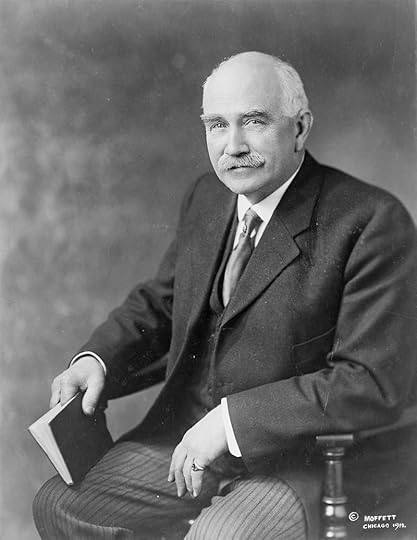
JUDSON HARMON was born in Newton, Ohio. He entered Denison University at the age of sixteen and graduated four years later, after which he taught school and then studied law, receiving a degree from Cincinnati Law School in 1896.
Although elected Judge of the Court of Common Pleas in Cincinnati in 1876, he was ousted from the position by the state Senate. Two years later he was elected to the Cincinnati Superior Court, a position in which he served for nearly a decade.
Although originally a Republican, he joined the Democratic Party after the Civil War. President Grover Cleveland appointed him Attorney General in 1895.
In 1897 Harmon returned to the practice of law and was appointed a special Investigator. He won two terms as governor, the second against Republican opponent and later U.S. President Warren G. Harding. During Harmon’s administration, the federal income tax amendment to the U.S. Constitution was ratified, and laws were enacted establishing a single board for the state’s penal, benevolent, and reformatory institutions; protecting against trafficking in votes; providing for workers compensation; creating a Public Utility Commission; and enabling direct popular election of U.S. Senators.
Harmon was Ohio's favorite son candidate for President in 1912. However, despite his popularity in Ohio, Harmon's prospects for national support diminished after William Jennings Bryant declared him a "reactionary" in response to his opposition to the idea of statewide initiatives and referendums. Consequently, he lost the Democratic nomination to Woodrow Wilson.
Harmon returned to the practice of law when his second term as governor ended, and also taught law at his alma mater—Cincinnati Law School. (Source: National Governors Association)
More:
https://en.wikipedia.org/wiki/Judson_...
http://www.ohiohistorycentral.org/w/J...
https://familysearch.org/search/catal...
http://legal-dictionary.thefreedictio...
https://ehistory.osu.edu/exhibitions/...
http://www.ohiohistoryhost.org/ohiome...
http://www.findagrave.com/cgi-bin/fg....
https://news.google.com/newspapers?ni...
https://news.google.com/newspapers?ni...
http://www.ohiomemory.org/cdm/ref/col...
http://millercenter.org/president/ess...
(no image) The National Cyclopaedia of American Biography, Volume I by James Terry White (no photo)
 by John W. Raimo (no photo)
by John W. Raimo (no photo) by Michael Les Benedict (no photo)
by Michael Les Benedict (no photo) by Arthur S. Link (no photo)
by Arthur S. Link (no photo) by William H. Hildebrand (no photo)
by William H. Hildebrand (no photo) by David Meyers (no photo)
by David Meyers (no photo) by Andrew R.L. Cayton (no photo)
by Andrew R.L. Cayton (no photo)
 Champ Clark of Missouri
Champ Clark of Missouri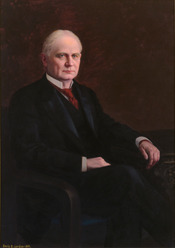
CLARK, James Beauchamp (Champ), (father of Joel Bennett Clark), a Representative from Missouri; born near Lawrenceburg, Anderson County, Ky., March 7, 1850; attended the common schools and Kentucky University at Lexington; was graduated from Bethany (W.Va.) College in 1873 and from Cincinnati Law School in 1875; president of Marshall College, Huntington, W.Va., in 1873 and 1874; admitted to the bar in 1875; edited a country newspaper and practiced law; moved to Bowling Green, Pike County, Mo., in 1876; city attorney of Louisiana, Mo., and Bowling Green, Mo., 1878-1881; deputy prosecuting attorney and prosecuting attorney of Pike County 1885-1889; member of the State house of representatives in 1889 and 1891; delegate to the Trans-Mississippi Congress at Denver in May 1891; elected as a Democrat to the Fifty-third Congress (March 4, 1893-March 3, 1895); unsuccessful candidate for reelection in 1894 to the Fifty-fourth Congress; elected to the Fifty-fifth and to the eleven succeeding Congresses and served from March 4, 1897, until his death; minority leader (Sixtieth and Sixty-first Congresses), Speaker of the House of Representatives (Sixty-second through Sixty-fifth Congresses), minority leader (Sixty-sixth Congress); unsuccessful candidate for reelection in 1920 to the Sixty-seventh Congress; chairman of the Democratic National Convention in 1904; died in Washington, D.C., on March 2, 1921; funeral services were held in the Hall of the House of Representatives; interment in City Cemetery, Bowling Green, Mo. (Source: Biographical Directory of the U.S. Congress)
More:
https://en.wikipedia.org/wiki/Champ_C...
http://shsmo.org/historicmissourians/...
http://history.house.gov/Historical-H...
http://www.champclark.org/
http://www.stltoday.com/news/local/ga...
https://thelibrary.org/lochist/histor...
http://www.modot.org/freebridges/Cham...
http://www.champclarkbridge.com/
http://digital.lib.uiowa.edu/cdm/ref/...
https://bridgehunter.com/mo/pike/cham...
http://dnr.mo.gov/shpo/nps-nr/7600111...
http://fox2now.com/2015/10/26/grant-a...
https://www.govtrack.us/congress/memb...
 by Champ Clark (no photo)
by Champ Clark (no photo) by John A. Garraty (no photo)
by John A. Garraty (no photo) by Lawrence O. Christensen (no photo)
by Lawrence O. Christensen (no photo) by Kenneth C. Martis (no photo)
by Kenneth C. Martis (no photo) by Champ Clark (no photo)
by Champ Clark (no photo) by Champ Clark (no photo)
by Champ Clark (no photo)
 Francis E. McGovern
Francis E. McGovern
FRANCIS E. MC GOVERN was born near Elkhart Lake, Wisconsin. He graduated from the University of Wisconsin in 1890, going on to serve as a high school principal in Brodhead and Appleton. He studied law in his spare time and was admitted to the Wisconsin Bar in 1897, after which he established a law practice in Milwaukee.
He was elected District Attorney in Milwaukee in 1904 on a reform platform, securing Grand Jury indictments against those involved in municipal corruption. Although not endorsed by the Republican Party in the 1906 primary for District Attorney, he went on to win as an independent candidate. With the support of Robert La Follette, he won the governorship in 1910, going on to help secure the first workers compensation program in the United States. He also supported workplace safety legislation, labor protections for women and children, a highway commission to administer a highway construction program, water and forest preservation laws, a state life insurance fund, and granting of home rule to cities. Other laws enacted during his administration were aimed at encouraging farm cooperatives and facilitating loans for farm improvements.
McGovern served as chair of the Governors' Conference Executive Committee. During his second term, he had a falling out with La Follette that resulted in La Follette supporters in the legislature opposing his proposals. Although he won the Republican primary for a vacated U.S. Senate seat in 1914, La Follette's failure to support to his bid cost him the election.
He went on to serve in the Army Judge Advocate Department, trying court martials, following which he became ex-officio chairman of the Claims Board of the US. Emergency Fleet Corporation. He supported Franklin D. Roosevelt in the 1930s and won the Democratic nomination for governor but lost the general election. (Source: National Governors Association)
More:
https://en.wikipedia.org/wiki/Francis...
http://www.wisconsinhistory.org/turni...
http://www.wisconsinhistory.org/Conte...
http://genealogytrails.com/wis/Govern...
https://catalog.hathitrust.org/Record...
http://politicalgraveyard.com/geo/WI/...
http://www.loc.gov/pictures/item/hec2...
(no image) The National Cyclopaedia of American Biography, Volume I by James Terry White (no photo)
 by John W. Raimo (no photo)
by John W. Raimo (no photo) by John D. Buenker (no photo)
by John D. Buenker (no photo) by Robert Booth Fowler (no photo)
by Robert Booth Fowler (no photo) by Michael L. Bromley (no photo)
by Michael L. Bromley (no photo) by Donald W. Rogers (no photo)
by Donald W. Rogers (no photo) by Bernard A. Weisberger (no photo)
by Bernard A. Weisberger (no photo) by Arthur Hove (no photo)
by Arthur Hove (no photo)
 Governor Herbert Hadley of Missouri
Governor Herbert Hadley of Missouri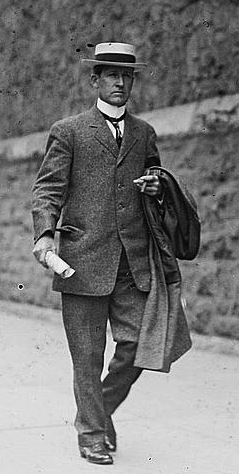
HERBERT S. HADLEY was born in Olathe, Kansas on February 20, 1872. His education was attained at the University of Kansas, from which he graduated in 1892, and at Northwestern University, from which he earned a law degree in 1894. He established his legal career in Kansas City, serving as the first assistant city counselor.
Hadley first entered politics as prosecuting attorney of Jackson County, a position to which he was elected in 1900. He also served as the attorney general of Missouri from 1905 to 1909. Hadley next secured the Republican gubernatorial nomination, and was elected governor in November 1908. During his tenure, a railroad passenger rate discrimination law was sanctioned, and a woman's nine-hour labor law was authorized.
After completing his term, Hadley left office and retired from political life. He returned to his legal practice, as well as serving as the attorney to the Interstate Commerce Commission from 1913 to 1916. In 1917, Hadley developed health problems, prompting him to move to Colorado. He taught law at the University of Colorado, and served as counsel to the Colorado State Railroad Commission. Shortly after returning to Missouri in 1923, Hadley became chancellor of Washington University, a position he held until 1927.
Governor Herbert S. Hadley passed away on December 1, 1927, and was buried in the Riverview Cemetery in Jefferson City, Missouri. (Source: National Governors Association)
More:
https://en.wikipedia.org/wiki/Herbert...
https://wustl.edu/about/history-tradi...
https://archive.org/details/specialme...
http://www.kchistory.org/cdm4/results....
https://catalog.hathitrust.org/Record...
https://babel.hathitrust.org/cgi/pt?i...
http://s1.sos.mo.gov/CMSImages/Archiv...
http://www.loc.gov/pictures/item/hec2...
https://www.loc.gov/item/mp76000114
http://vintagekansascity.com/menwhoma...
https://www.umbrasearch.org/catalog/b...
http://www.stltoday.com/news/multimed...
http://libraryguides.missouri.edu/c.p...
http://www.findagrave.com/cgi-bin/fg....
http://shsmo.org/manuscripts/columbia...
 by John W. Raimo (no photo)
by John W. Raimo (no photo) by Lawrence O. Christensen (no photo)
by Lawrence O. Christensen (no photo) by Alan R. Havig (no photo)
by Alan R. Havig (no photo) by Lee Ann Whites (no photo)
by Lee Ann Whites (no photo) by David Thelen (no photo)
by David Thelen (no photo) by
by
 J.D. Tanner
J.D. Tanner
 Senator William Borah of Idaho
Senator William Borah of Idaho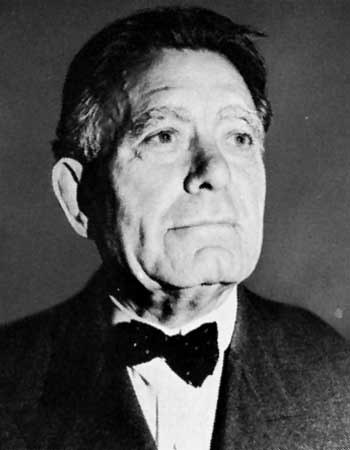
William Edgar Borah (born June 29, 1865, Fairfield, Ill., U.S.—died Jan. 19, 1940, Washington, D.C.)
Republican U.S. senator from Idaho for 33 years, best known for his major role at the end of World War I (1918) in preventing the United States from joining the League of Nations and the World Court.
Borah practiced law in Boise, Idaho, and in 1892 became chairman of the Republican State Central Committee. He first won election to the U.S. Senate in 1906 and was returned to office five times by large majorities, making his tenure one of the longest in U.S. history. Borah’s distrust of government centralization limited his commitment to social reform, but he did sponsor bills establishing the Department of Labor as well as the federal Children’s Bureau. He also strongly supported the federal income tax and fought the trusts.
Isolationism dominated Borah’s attitudes toward foreign policy. He did, however, sponsor a congressional resolution (1921) calling for an international naval disarmament conference in Washington, D.C., resulting in the Naval Armament Limitation Treaty concluded Feb. 6, 1922. Assuming the chairmanship of the Senate Committee on Foreign Relations in 1924, he wielded enormous power in this area for the next 16 years.
Borah did not object to international compacts so long as the enforcement mechanism was limited to moral sanctions; thus he lent his support to the Kellogg–Briand Pact (Paris, 1928)—an ineffective multilateral agreement theoretically outlawing war as an instrument of national policy. He consistently upheld diplomatic recognition of the Soviet Union and also helped establish the Good Neighbor policy toward Latin America by advocating a fair deal for Mexico during the controversy over foreign-held oil properties (1926–28).
During the Great Depression of the 1930s, Borah supported many New Deal measures designed to relieve internal economic conditions. As European tensions mounted, however, he held fast to his isolationist stance by resisting all attempts to involve the U.S. on the side of the Allies. (Source: Encyclopedia Britannica)
More:
https://en.wikipedia.org/wiki/William...
http://www.encyclopedia.com/topic/Wil...
http://www.politico.com/story/2016/01...
http://www.senate.gov/artandhistory/h...
https://www.uidaho.edu/class/borah/ab...
http://law2.umkc.edu/faculty/projects...
http://en.metapedia.org/wiki/William_...
http://idahoptv.org/productions/speci...
https://thebluereview.org/borah-frank...
https://www.geni.com/people/William-B...
http://historynewsnetwork.org/article...
https://localwiki.org/boise/Senator_W...
http://www.kevincmurphy.com/williambo...
http://www.gettyimages.com/pictures/w...
http://digital.boisestate.edu/cdm/lan...
http://knoxfocus.com/2013/01/william-...
http://www.wow.com/wiki/William_Borah
http://bioguide.congress.gov/scripts/...
https://www.jstor.org/stable/40188261...
https://www.jstor.org/stable/40488686...
https://www.jstor.org/stable/3634181?...
(no image) Haywood Trial: Closing Argument of W. E. Borah by William Edgar Borah (no photo)
(no image) American Problems: A Selection of Speeches and Prophecies by William Edgar Borah (no photo)
(no image) The League of Nations; Speech Delivered in the Senate of the United States by William Edgar Borah (no photo)
(no image) Borah by Marian C. McKenna (no photo)
(no image) Borah of Idaho by Claudius Osborne Johnson (no photo)
(no image) The Spearless Leader: Senator Borah & the Progressive Movement in the 1920s by LeRoy Ashby (no photo)
(no image) Illusion of Neutrality by Robert A. Divine (no photo)
 by John A. Garraty (no photo)
by John A. Garraty (no photo) by John Chalmers Vinson (no photo)
by John Chalmers Vinson (no photo) by Robert James Maddox (no photo)
by Robert James Maddox (no photo) by Selig Adler (no photo)
by Selig Adler (no photo) by Alfred E. Eckes Jr. (no photo)
by Alfred E. Eckes Jr. (no photo) by Vanessa A Holloway (no photo)
by Vanessa A Holloway (no photo) by Glen Jeansonne (no photo)
by Glen Jeansonne (no photo) by Ronald E. Powaski (no photo)
by Ronald E. Powaski (no photo) by Meg Jacobs (no photo)
by Meg Jacobs (no photo) by
by
 Christopher Hitchens
Christopher Hitchens by
by
 Robert H. Ferrell
Robert H. Ferrell
Books mentioned in this topic
The Life of Lenin (other topics)Lenin and Revolutionary Russia (other topics)
Workers Against Lenin: Labour Protest and the Bolshevik Dictatorship (other topics)
Lenin and His Comrades (other topics)
Lenin Reloaded: Toward a Politics of Truth (other topics)
More...
Authors mentioned in this topic
Stephen J. Lee (other topics)Sebastian Budgen (other topics)
Louis Fischer (other topics)
Jonathan Aves (other topics)
Yuri Felshtinsky (other topics)
More...




This one is very condensed - so there is a lot covered in each chapter